The B2B CEO
While your counterparts are leaving their bid teams entirely to their own devices, you’re not so naïve. You’re no micro-manager, but you’re also not about to take your eye off the ball in any mission-critical pursuit.
From the strategic selection of opportunities, to the alignment of win strategies both with short-term sales pipeline priorities and corporate goals . . . you’re across it, steering the ship from your
all-important C-suite perspective.
ACADEMY KNOWLEDGE BASE

By Jordan Kelly
•
April 17, 2025
Here are four prime no-no’s when giving shortlistee presentations: 1. Don’t use lots of unexplained technical jargon to make yourself sound smart. ( NB: The same advice applies to your written submissions.) 2. Don’t let everyone know how important you are. 3. Don’t recite your presentation from memory or sound as though you are. 4. Don’t cram your slides with numerous text bullet points in multiple fonts. Source: Chris Anderson’s ‘How to Give a Killer Presentation’, Harvard Business Review.

By Jordan Kelly
•
April 16, 2025
If you’re a senior executive responsible for setting – and overseeing the attainment of – your enterprise’s corporate growth goals, I have a question for you: How informed are you on the individual contracts that comprise the overall total of your organisation’s business-under-pursuit? How certain are you that the priorities underpinning the prioritisation of current […]

By Jordan Kelly
•
March 27, 2025
How do you slash the cost of bidding without bringing about a correspondent drop in submission quality? I’m about to present you with nine suggestions which, when implemented, will not only save you time and resources (read: budget) but will, in fact, streamline the process and produce a superior end product. Fair warning: Some are […]

By Jordan Kelly
•
March 2, 2025
Whilst the first and most immediately obvious step in improving poor articulation performance in a submission is to subject it to a rigorous editing process, there’s almost always a greater issue at play. That issue is the largely non-client-specific (at least, not convincingly specific) and generally “same, same” nature of the content . . . the supplier-focused “brochureware” that results from an unclear, uncertain or absent bid strategy. Or an insufficiently documented one. In almost every bidding enterprise I’ve worked with, writers have previously had to either rely on little more than workshop notes, together with existing generic content, to inform their response sections. For the most part, they’re forced to interpret and piece together in their own minds, the intended underpinning strategy and guiding themes supposedly resulting from planning sessions. In many cases, they’re faced with making up the content themselves without any guidance. It’s critical to recognise that producing a client-focused submission requires more than a simple emphasis on writing techniques and editing processes (e.g. flipping sentences around to commence with the client organisation’s name versus the bidder’s). If writers are given a comprehensive and user-friendly bid strategy blueprint to guide them, and along the way their outputs are nurtured by the appointed strategist within the group, their writing should, by default, adequately convey the bid strategy. And it should do so in a client-focused manner.

By Jordan Kelly
•
March 2, 2025
One of the less tangible, less immediately “visible” reasons for the loss of either a new-business pursuit, or an existing account, is a misalignment between organisational cultures. I’ve seen this happen on a number of occasions. One that springs colorfully to mind involved an SME client, quite some years ago: A sizeable print management firm was pursuing an account with the Australian operations of a large consumer goods multinational, with requirements that included high-volume direct mail campaign activity. The business development operative (“BD”) on this account had, for over a year, been aggressively endeavouring to win over the account from a competitor. Each time he’d gotten close to potentially consummating the deal, however, this potential client appeared to back off. Finally, he’d moved the relationship to the stage where a serious, formal proposal had been requested of him . . . the point at which he contacted me. When the Client’s Psychology Differs from Yours Conducting a detailed interview with this BD to understand the client’s psychology, it became clear to me that the BD’s aggressive and gung ho culture (which was also that of his company at large) was at complete loggerheads with the far softer, more relationship-respecting modus operandi of the client organisation. It didn’t take me long to work out from an analysis of the historical dialogue that there was, in fact, no lack of interest in the service and other aspects of this provider’s offer. Rather, there was pushback based on this BD’s manner and approach. He didn’t see it. Not only was he oblivious to it, he advised me that when I’d produced the proposal he was tasking me with, he intended to brandish it forcefully before the client representative with an ultimatum that she make a decision forthwith or . . . well, the rest of the intended statement was quite colorful (something to the effect of "shit or get off the pot"). With some considerable persuasive effort, I managed to convince him not to take this stance. I suggested that, instead, he recognise the nature of the corporate culture he was dealing with and take a far more empathetic approach. Long story short: A little bit of “empathy” and a couple of weeks’ more patience on the BD’s part, and he bagged a new, $20m per annum account for his employer. The moral of the story is this: The Client Knows . . . Either Consciously or Subconsciously When pursuing any type of account, project, implementation, or other form of deal that requires your people to work closely with the client organisation, take culture seriously. Even if the potential client doesn’t consciously recognise the reason for any resistance on their own part, he or she will “at a gut level” detect cultural misalignment. And even if you do win the deal, a poor cultural match has the potential to be, at best, a constant challenge in the ensuing relationship. At worst, it has the potential to create disaster. Here are five steps you can take in the event that you sense a potential cultural mismatch: 5 Steps for Averting or Dealing with A Cultural Mismatch Determine the degree of mis-match. Determine whether or not this has, or may, cause mis-alignment in more tangible ways as the relationship progresses. If, given your consideration of these facts, you decide to press ahead, map out a strategy for addressing and to the greatest extent possible overcoming the mis-match. Where possible, make the elements of your plan measurable by, for example, formulating strategic Key Performance Indicators (KPIs). Recognise that this will be an issue that needs constant monitoring throughout the life of the project or contract. Be upfront with the client about your plans and efforts. Again, you’re probably only kidding yourself if you think the client organisation is unaware of the cultural mis-alignment. Far better that you demonstrate your own awareness, and your proactive approach to striving for a successful working relationship.
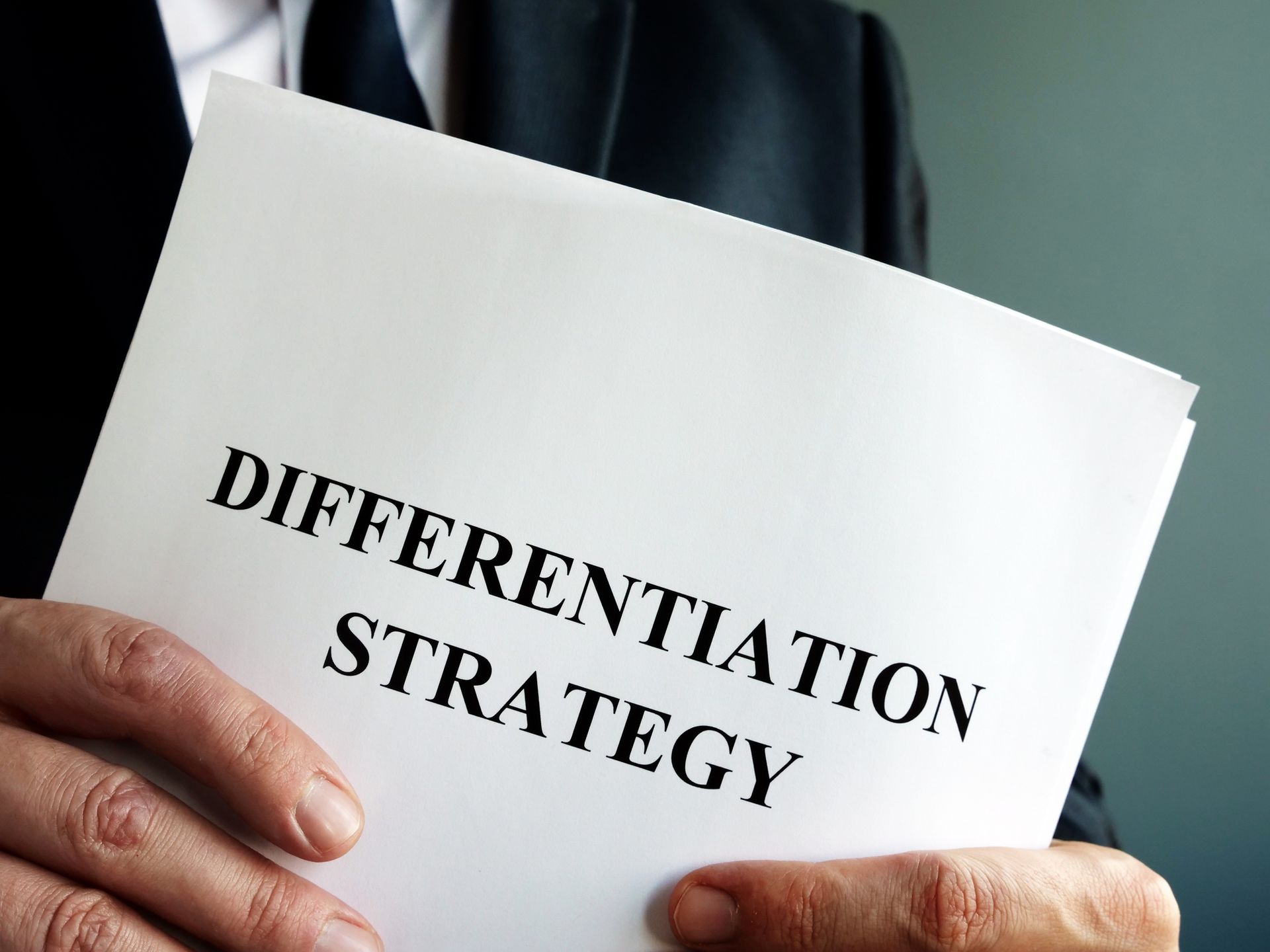
By Jordan Kelly
•
March 2, 2025
Prominent social commentator of the Victorian era, John Ruskin, famously observed: "There is hardly anything in the world that some man cannot make a little worse and sell a little cheaper, and the people who consider price only are this man’s lawful prey." Ruskin’s words are nowhere more applicable than in the world of high-value tenders. With rarely an exception, those organisations that issue market calls with the sole or primary objective of sparking price competition (and getting a cut-throat deal), inevitably pay the price in some other form. That’s not news. But it doesn’t apply to all potential customer organisations . . . and the ones to which it doesn’t apply are, obviously, the ones smart transport operators want to be targeting. The trick is to give those organisations a solid reason – other than cost – to choose you . Differentiating in A Highly Commoditised Space You know what’s coming, right? You guessed it: The predictable admonition to differentiate your company and your offering on something other than price. That’s all well and good, but let’s take, for example, my readers from the transport sector (and other highly commoditised industries): When the competition offers exactly what you do and you’ve done everything you can – exactly how do you differentiate? The answer: You think from the client’s head. The point of self-focus from which the vast majority of bidders come when responding to an Expression of Interest (EOI), Request for Tender (RFT) or Proposal (RFP) renders it hard to see what’s most meaningful to the client. Sure, what the client wants is articulated in the selection criteria . . . but, in some industries particularly, these criteria can be pretty bald and (often, if the client documentation is template-based) not nearly as contract-specific as they could be. So . . . you have to dig deeper . Way below surface level. A Courageous Pursuit Recently I conducted a series of bid strategy sessions for a rapidly growing mid-tier organisation in a somewhat courageous pursuit for a certain type of contract with a very large mining consortium. After leading the senior management and the appointed bid team through a comprehensive and in-depth analysis of the competitive landscape, the surprised and humbled team made the collective observation that, “We’re not anything special after all. We don’t do anything more or anything different than anyone else.” I assured them they did. They had done something very different indeed by conducting a series of detailed, in-depth analyses of their prospective client’s world, of its priorities, and of their own capabilities in the context of their new-found knowledge. There’s A Tangible Value to A Client-Focused Bid That made them immeasurably different. Unlike their competition which would undoubtedly present the same old template-style, supplier-centric dross as everyone else, they would – through a now- deep understanding of their client – produce a bid that clearly demonstrated a superior knowledge of that organisation’s operating environment and challenges. Critically, my client would demonstrate that it had formulated its service proposal in direct (and comforting) accordance with these. A response of that quality offers a distinct and very real value to the procuring organisation . . . a value in terms of risk minimisation, frustration avoidance, value maximisation , and general peace of mind . And all of these, in turn, ultimately have a monetary value – especially in a long-term service provision contract.

By Jordan Kelly
•
March 2, 2025
"You’ve proposed a ‘sledgehammer’ solution and we are a ‘walnut’ customer." Feedback of this nature is not uncommon in ICT bid debriefs, by my observation. And it’s just one example of the many different ways in which a proposed “solution” can be totally out of alignment with a client organisation’s actual needs. Taking the above example, how does it come about that a client organisation finds a huge solution put forth to it, for a comparatively small need? Often, it results from the vendor sales team’s excitement over their company’s latest technology/product, and their un-resisted temptation to promote it as the solution to all problems, both great and small. A Lack of Questioning Know-How Sometimes, however, it’s a lack of know-how, when it comes to mapping out a process for digging deeply into the client’s “big picture”. Let’s take a look at the dangers of not knowing your prospective client’s world as intimately as you perhaps think you do. Here’s a telling comment made to me by a client of one of my own clients some years ago. I’d been digging around (in a proactive proposal scenario i.e. one not subject to probity restrictions) to identify the reason for the significant amount of push-back the BD team sensed during interactions with the organisation in question: “(Vendor) is used to dealing with organisations with daily throughputs equivalent to our monthly throughput volume. We’re not there yet. They want our business but they’re in auto-pilot mode when they converse with us. They don’t get us or where we’re at. If they did, they wouldn’t be proposing this big thing.” The vendor’s reputation was being compromised by this situation: Pushing what the prospect saw as an overkill solution was creating the distinct impression that that organisation was seen simply as a “great big cash cow”. Worse still, one that didn’t know any better. If, for example, your client is an organisation with a call centre, does your client consider its needs – in the context of its own industry norm – relatively simplistic? Or, in fact, quite complex? Or somewhere in between? Frame the Question from the Client’s Perspective You need to ask the question from the client’s perspective . And then you need to understand precisely why the client considers that the organisation’s need sits at this level of simplicity or complexity. And within that level of simplicity or complexity, what are the client organisation’s specific priorities and why? What aspects of their business or their customers’ behaviour dictates that these are the priorities? And what are the risk factors associated with these priorities not being recognised? And, coming back to simplicity (or complexity), are their hidden layers of complexity required to actually achieve the simplicity (i.e. in a risk-free manner) that the client desires? Perhaps what the client desires more than anything is simplicity of implementation and operation . . . but is overlooking the fact that there is necessary complexity involved in creating that simplicity? Good Questions Catalyse A Deep & Meaningful Relationship The point is, there’s a whole line of investigation that needs to be conducted, and this is the type of question that can catalyse a deeper and more meaningful conversation between vendor and client. It’s the type of questioning that lets the client know you’re not just trying to apply your newly released technology or other flavour-of-the-quarter solution to that organisation’s needs or problems, regardless of whether it really is the best, most client-centrically thought-through option. Questions like these show that you see your role as understanding specific problems and solving them, or understanding specific desires and fulfilling them . . . as opposed to simply spruiking your software (or other form of “solution”). The key is for you, the vendor, to enable the customer – and to do so in the most proficient, cost-effective, adoptable, adaptable and results-oriented fashion. And the only way to be sure that what you propose will do that – in the words of the afore-mentioned end-client – is to: “Get involved and not just talk the talk. Interact with us and immerse yourself in ‘a day in the life of’. Invest some time looking at the world through our eyes and, more specifically, through the eyes of those in our organisation who have to pick up your technology and kick goals with it.”

By Jordan Kelly
•
February 24, 2025
One of the less tangible, less immediately “visible” reasons for the loss of either a new-business pursuit, or an existing account, is a misalignment between organisational cultures. I’ve seen this happen on a number of occasions. One that springs colorfully to mind involved an SME client, quite some years ago. After a long and energetic courtship on his part, he’d moved the relationship to the stage where a serious, formal proposal had been requested of him . . . the point at which he contacted me. When the Client’s Psychology Differs from Yours Conducting a detailed interview with this BD to understand the client’s psychology, it became clear to me that the BD’s, and his print management company’s, aggressive and gung ho culture was at complete loggerheads with the far softer, more relationship-respecting modus operandi of the client organisation. It didn’t take me long to work out from an analysis of the historical dialogue that there was, in fact, no lack of interest in the service and other aspects of this provider’s offer. Rather, there was pushback based on this BD’s manner and approach. He didn’t see it. Not only was he oblivious to it, he advised me that when I’d produced the proposal he was tasking me with, he intended to brandish it forcefully before the client representative with an ultimatum that she make a decision forthwith or . . . well, the rest of the intended statement was quite colourful . . . like, err, "shit or get off the pot" . . . not a particularly relationship-nurturing statement. With some considerable persuasive effort, I managed to convince him not to take this stance. I suggested that, instead, he recognise the nature of the corporate culture he was dealing with and take a far more empathetic approach. Long story short: A little bit of “empathy” and a couple of weeks’ more patience on the BD’s part, and he bagged a new, $20m per annum account for his employer. The moral of the story is this: The Client Knows . . . Either Consciously or Subconsciously When pursuing any type of account, project, implementation, or other form of deal that requires your people to work closely with the client organisation, take culture seriously. Even if the potential client doesn’t consciously recognise the reason for any resistance on their part, he or she will “at a gut level” detect cultural misalignment. And even if you do win the deal, a poor cultural match has the potential to be, at best, a constant challenge in the ensuing relationship. At worst, it has the potential to create disaster. Here are five steps you can take in the event that you sense a potential cultural mismatch: 5 Steps for Averting or Dealing with A Cultural Mismatch Determine the degree of the mis-match. Minor . . . or real deal-breaking stuff? Determine whether or not this has, or may, cause mis-alignment in more tangible ways as the relationship progresses. If, given your consideration of these facts, you decide to press ahead, map out a strategy for addressing, and to the greatest extent possible overcoming, the mis-match. Where possible, make the elements of your plan measurable by, for example, formulating strategic Key Performance Indicators (KPIs). Recognise that this will be an issue that needs constant monitoring throughout the life of the project, contract or other form of commercial relationship. Be upfront with the client about your plans and efforts. Again, you’re probably only kidding yourself if you think the client organisation is unaware of the cultural mis-alignment. Far better that you demonstrate your own awareness, and your proactive approach to striving for a successful working relationship.

By Jordan Kelly
•
February 23, 2025
In the case of a pursuit in which a formal tendering process is not yet a foregone conclusion, your best chance of avoiding it turning into one is to: Progressively formulate an offering based on an increasingly deep knowledge of the customer or client organisation’s specific environment, needs and circumstances (which involves quality questioning, deep research and formulation of the solution and strategy in incremental stages); Careful alignment of every aspect of the customer’s / client’s need with the strengths, and preferably, the uniquenesses, of what you are able to offer; A de-risked solution or proposition, and Real-time evaluation of any competitive threat and offering. With the patience and tenacity to progress the pursuit in accordance with this strategy, you’ll stay close to the action as it evolves. Preferably you will drive the action . . . or, more specifically, the thinking behind it i.e. on the customer’s part. This, unfortunately, is where many business development and sales teams weaken their opportunity i.e. by over-riding human nature: The customer’s key people want their thoughts and decisions to be their own; they don’t want to be sold to. But, in many instances, BDs – in their keenness to stake their product’s ground in the customer’s mind as firmly and quickly as possible – go into “salesman” mode. Don’t give them their opinions – or don't try to. Help them shape their conclusions with quality questioning and collaboratively and progressively formulated strategies that they can own . To attempt to forcibly chisel out pre-formed conclusions for them, creates natural human nature-based resistance – in terms of intellectual ego and, possibly, also in terms of suspicion. Be a strategic collaborator, a genuine trusted advisor . Not a self-serving salesperson. It doesn’t matter how senior your position within your own organisation, you still very much risk coming across as a salesperson by not investing the time, patience and smarts in drilling deeply into the customer organisation’s stakeholder environment and needs – which, if the procurement isn’t in the process of going to a formal tender – may not be fully known even to customer organisation itself yet. That provides you with a perfect opportunity to be a strategic collaborator who brings genuine value to each meeting, as opposed to being just another product pusher. And if your product or service is a natural fit, then your quality questioning will enable you to table all the right information, which – in turn – will support the drawing of the logical conclusions, in incremental stages i.e. that a formal bidding process may be unnecessary . . . particularly if you have also identified and presented a maximally de-risked proposition.

By Jordan Kelly
•
February 22, 2025
“It’s the deals you walk away from that make you rich, as much as the successful deals.” This line leapt out at me one night, when I was reading something as otherwise unrelated to bids as it gets. That simple, yet profound statement catapulted me straight back into bid strategy mode. Why? Because I’ve seen numerous companies insist on investing huge resources in a bid they didn’t have a chance of winning. And most times that bidder knew it. They knew their pre-sales engagement was inadequate (or non-existent). They knew their insider knowledge of the prospect organisation was insufficient. They weren’t even sure who they were really up against, or the competition’s standing with the prospect. They were aware of many other knowledge gaps they’d left it too late to address by the time the EOI / RFP / RFT was released. And they couldn’t put their hand on their heart and say they believed their offering was the prospect’s best option – a situation that may well not have altered even if they were in possession of a lot more information. Worst of all, sometimes they hadn’t even done sufficient research to determine whether or not the EOI, RFP or RFT was the real deal. (We all know it’s not uncommon for procuring organisations to issue a call for tenders without being in a position to actually finance the contract, or already knowing full well whom the contract will be awarded to, or simply to keep the incumbent on its toes.) ‘Oh Well. We’ll Just Go For It Anyway.’ But still these keen bidders insisted on going through the resource-draining motions of submitting a Response. And at the predictable outcome, there were numerous disappointed and demoralised staff members to console, all of whom now had to peddle furiously just to catch up with the responsibilities they’d put on hold during the all-consuming madness of the bid production period (which usually was frantic because, most times, they were playing catch-up in their information-gathering efforts). So why does a company take the decision to produce a submission for a bid contest it has little chance of winning? Let me give you just some of the reasons: 1) To be seen to be “in the game” because primary competitors are, or are assumed to be, bidding. 2) Their inadequate background/pre-sales research failed to identify a bad technological or cultural fit. (Pre-qualification processes will hopefully ensure technological capability. Cultural compatibility is a less tangible but equally important issue.) 3) The contract is with a high-profile organisation that would look impressive on the bidder’s client list and/or represent a valuable reference. 4) “ The company needs the business.” (Flawed logic in the extreme. It would be best identifying, researching and going after more achievable pursuits.) 5) Unrealistic thinking, plain and simple. Let’s consider each of these “reasons”. To be ‘in the game’. If your competitors have done a better job of their pre-sales research and relationship-building and – assuming they can put together a halfway decent proposal – how will it behoove your cause to have your half-baked bid laid out beside theirs in front of the evaluation team? Failure to identify a bad technological or cultural match. A poor technology fit is going to be obvious from the information you provide in your Response. How is that going to make you look? Firstly, most switched-on evaluation teams don’t like wasting their time any more than you’re going to have appreciated squandering your own resources. Secondly, conveying the impression of an ill-researched or unrealistic bidder is not the impression you want to leave with an organisation with which you may want to bid for work in the future (for a project, product or service your company is more suited to delivering). A poor cultural match has the potential to be, at best, a constant challenge, at worst, a complete disaster. If you’re a young, risk-taking, gung-ho sort of company, and the customer is old-school, staunch, slow-moving and bureaucratic, for example, project forward with a strong sense of reality before deciding to bid for a close, ongoing working relationship. The ‘If We Can Get This One’ syndrome. The higher you fly, the harder you fall. If a deal’s high-profile enough to “make” you, imagine how quickly it can break you if you do win it and you’re not really up for it. ‘We need the business.' At any cost? Does it fit with your overall corporate marketing strategy? Is it genuinely taking you places? How will the contract turn out if you don’t really have the resources it’s going to take to do the job well and create a happy, satisfied client or customer organisation? Lack of realism. See all the above. There’s so much downside and very little upside when you decide to enter a bidding contest you should have gracefully declined. Wasted budget, demoralised staff, compromised corporate image . . . One simple piece of advice: Be realistic. As you can see, there’s no point in being anything else but. Think of the opportunity cost in other areas where resources might have been far more profitably invested, and your corporate image enhanced rather than compromised. Think of the comparative ease of those sales efforts versus the effort of trying to put up a convincing case when you haven’t really got one.

By Jordan Kelly
•
February 22, 2025
If a company struggles to differentiate its product or service from that of its competition, the first element of any corrective strategy should be to seek to deepen the level at which it understands its prospects and its clients. Not all companies do this well. Most don’t. Why am I confident to make such a sweeping statement? I see the evidence on a daily basis as a bid strategist and writer, and as an evaluator and bid coach. When I take on a new client, almost without exception, that organisation’s previous bids, tenders and proposals literally shout self-centricity. Those that think they don’t, are always surprised to learn just how much further they could go in taking a genuinely client-centric approach and, in the process, de-commoditising themselves far more effectively. Symptoms of Self-centricity Let me demonstrate how a self-centric perspective shows up in a bidder’s documentation. I’ll focus on just one part of a bid document — the Executive Summary . Here are two examples that literally whack an evaluator between the eyes with this syndrome on the bidder’s part: Example One: ‘We’, ‘Our’, ‘Us’ I once evaluated a bid, the Executive Summary of which featured the seller’s name no less than 17 times in a short series of introductory paragraphs. Don’t laugh; a large percentage of these key front pieces end up with the seller’s or service provider’s name (or ‘we’, ‘our’ and ‘us’) at the beginning of most paragraphs. This indicates a lack of knowledge, understanding and caring about the client organisation and its issues and priorities, as well as a lack of listening skills and a probable low “care factor” on the part of the bidder. The propensity for a bidder to communicate in such a way that the world revolves around them i.e. the supplier or service provider, rather than around the prospect/client makes it obvious to the client and its evaluators that the entire working relationship is likely to evolve in this same, very predictable, direction. This — in the client’s mind — places that bidder in the same self-focused category as the majority of its competition. And this, in turn, relegates it to a largely undifferentiated status. Example Two: Framing Strengths Most Executive Summaries focus almost exclusively on getting across the bidder’s strengths. Some do go slightly further, communicating the purported competitive uniqueness of the offering. Few, however, investigate and explain the specific relevance of these to the client and its operating environment. And without doing so, they come across as arrogant, lazy or both. It’s also a wasted opportunity. Regardless of any information requests made in a client’s tender call documentation, the client’s interest in the service provider centres around the relevance of that information to its own organisation, its own priorities, its own issues and how all these will be satisfied in any potential contract with the bidder. Let’s come back to de-commoditisation. The degree to which your company can demonstrate a relevant and competitively superior understanding of the client organisation, and how your strengths and the aspects of your offering uniquely position you to solve the client’s problem and/or achieve that organisation’s desires, is the margin by which you’ll be out in front of your competition. In turn, the extent to which you are out in front of your competition (on elements of your offer other than price) is the extent to which you have successfully differentiated your company and your service or solution. In turn, the extent to which you’ve differentiated your proposition, is the extent to which you free yourself from the price trap into which most operators in heavily commoditised industries otherwise fall.
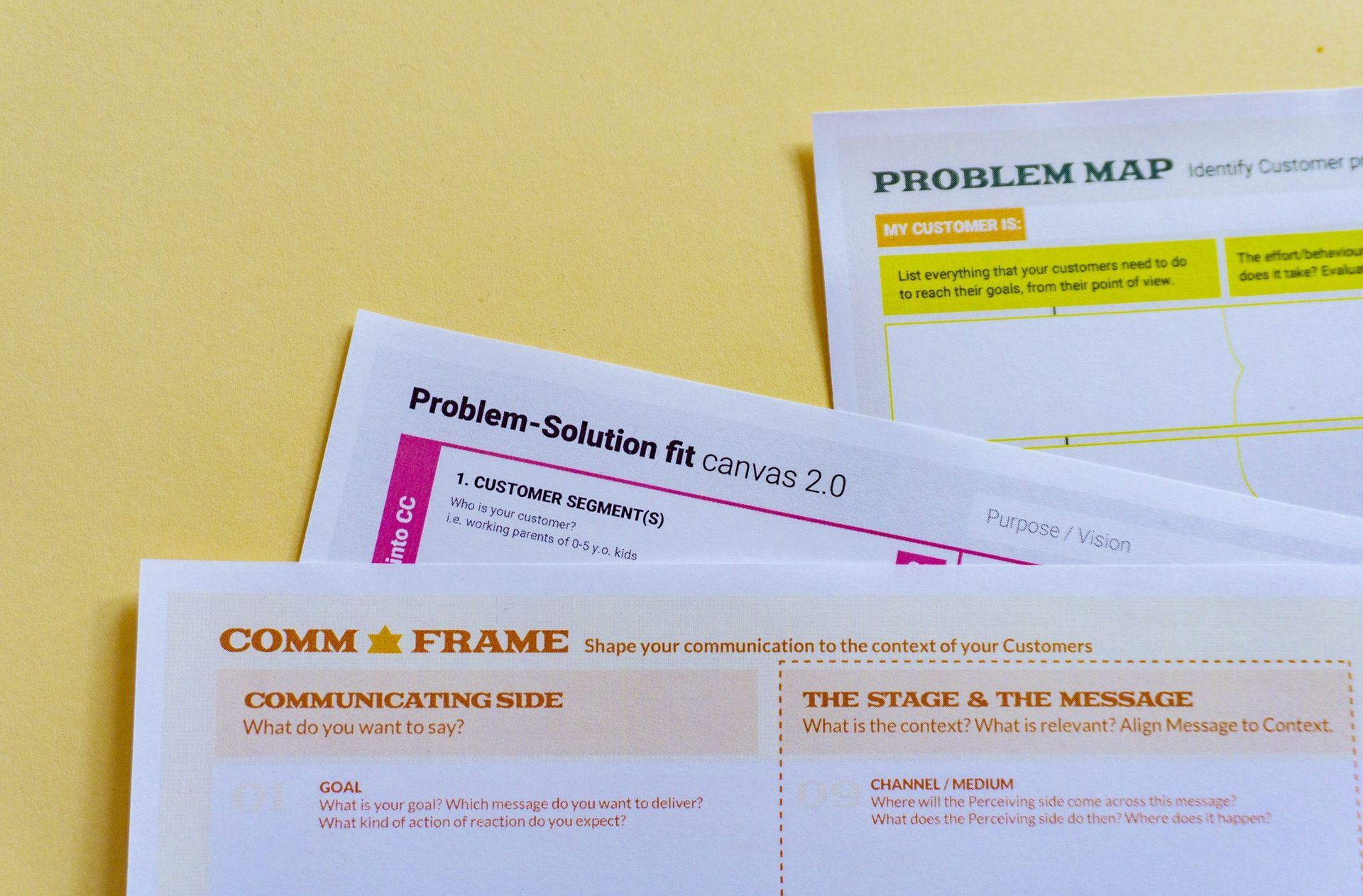
By Jordan Kelly
•
February 22, 2025
Many organisations place a heavy focus on developing a raft of heavily prescriptive templates, in the belief that this will produce comprehensive and well-thought-out bid "strategy". In other Pursuits Academy articles, I articulate, in detail, precisely why it is that quality strategy (in fact, why real “ strategy”) cannot be produced by templates. Now, in this upload, I will make the additional observation that “over-templatisation” actually de-motivates workshop participants and others looked to for strategy input. There’s an irony at play in many B2B organisations: While at the upper levels of strategy direction, someone is busy creating more templates and injecting existing templates with more fields to be filled in, the root of the problem (i.e. poor quality strategy) is the templates themselves . And it’s not only the fact that these templates (no matter how detailed) don’t produce quality (or even genuine ) strategy, it’s also that their usage fails to enthuse and compel people to avidly embrace the whole (as in, the whole of the ) strategy development process . Are You Addressing the Root of the Problem? Try this possibility on for size, as regards your own organisation: Are you too focused on making your processes more involved and more complex, when the immediate problem is actually that you’re struggling to get your client-facing personnel (i.e. business development and sales representatives) to use the existing processes/templates effectively and enthusiastically? The alternative is to understand that the mining of critical client-facing insights and information, and the subsequent formulation of bid strategy, is not – in general – well-served by templates . . . or, at least, not past a certain, still reasonably elementary, stage in the process. True strategy is fluid, and results from free-flowing (albeit tightly directed) investigative conversations that range both deep and wide . . . the direction of which cannot be determined by a template approach. Let me conclude with a (true) story from my early days specialising in this field. The Australian head office of a multinational IT giant had spent some hundreds of thousands of dollars on implementing new software that provided a range of templates – predominantly for the capture of information gleaned by BDs following any meetings they had with potential customer organisations. An Expensive White Elephant Although the use of these templates was mandated, the BDs used these minimally, if at all. (They considered them the ruination of an otherwise nice afternoon in the company of a major customer or prospect.) After months of unsuccessfully cajoling the BD team into embracing the software a little more enthusiastically, I was called in by the company . . . initially to add to their efforts to gain traction for the use of the program (which, by this stage, had turned into an expensive white elephant). I’ll cut the story short, by saying that my approach to the problem involved closely evaluating the modus operandi of the various key BD team members, in order to determine the role each was best suited to playing in the gathering and documentation of customer insights, the supplementation of these with secondary research, and the conversion of all these information types into actionable strategy. This approach worked. Why? Because (a) it reflected how real strategy is developed, (b) it inspired the team members to think through the contribution of their individual roles and make strategic use of their opportunities, and (c) it allowed each individual to operate in a manner conducive to their own personalities.

By Jordan Kelly
•
February 21, 2025
The No. 1 way to strike a consistently high win rate with your bids and high-stakes proposals is simply this: Make it a top priority to understand why you won, or why you lost, all those that came before the one you’re currently working on. Clearly, the client-delivered debrief is the most obvious way to achieve a first-hand understanding of whether and where a submission hit the mark, or whether and where it didn’t – and (also, hopefully) how it stacked up against the competition. The value of the information and insights obtained from such an exercise, however, is almost always directly proportionate to how effectively each side prepares for, and participates in, the debriefing session. The “trick” to using the debrief as your “secret weapon” in your quest to consistently pip the competition at the post, lies in extracting high-potency intelligence; frank, no-holds-barred, painstakingly detailed commentary . . . “news you can use” to mastermind quantum leaps of continuous improvement in your processes. Even when you’re already submitting winning bids. Assumptions Make Dangerous Allies Don’t let a successful bidding track record blind you to the merits of working hard to extract valuable feedback on all aspects of your most recent bid: To repeat success wilfully , you must know exactly what created it. Assumptions make dangerous allies. In my opinion, one of the greatest quotes of all time was uttered by Napoleon Bonaparte, when he said: “The greatest danger occurs at the moment of victory.” When being enlightened as to why it won, many a jubilant winning team has had its proverbial bubble burst by learning that it was a completely different factor that won it the bid, than that which it had assumed. (It goes without saying, of course, that if you’re on a losing streak you have an even greater incentive to find out all you can from a debrief, to help steer you towards success.) How to avail yourself and your team of a high-value debrief, then? Corral the Horses: You Want It from Their Mouths (Not Third-Hand) First and foremost, you want the feedback to come from “the horses’ mouths” i.e. the members of the tender evaluation panel . . . not second-hand, from personnel who weren’t directly involved in the evaluation, and who (worse still) may never had read your submission in detail. Getting the right people at the debriefing table is critical. You’ll greatly increase your chances of this by targeting your (formal) email request/s to the most senior client organisation representatives, conveying the importance, to you and your team, of the debrief. If applicable and appropriate, ensure the probity auditor of the bidding process is included in, or cc’d in on, these communications. Don’t try to achieve this objective through phone calls, or “whipped off”, informal emails. This risks downplaying the significance of your request and of the debrief per se. Don’t be timid on this point. You should (politely, of course) state that you’d appreciate the client-side debrief participants include those directly involved in the evaluation process. This transmits the message (in an acceptable manner) that you’d appreciate the client-side preparing adequately for the debrief, as you’ll be expecting accurate and detailed feedback. This latter point is particularly important. In the case of a major project, it could be four or five months post-decision before a debrief is held. Thus, the evaluators need to be prompted to refresh themselves with regard to the detail of your bid documentation. End With the Start in Mind Secondly – plan, plan, plan. To turn an old saying on its ear, when planning your own approach to the debrief, end with the start in mind. That is, set out to learn as much as you can about the strengths and weaknesses you exhibited in the current bid, in order to start out on a stronger footing with your next bidding performance. When I’m preparing a bid team to attend a submission debriefing session with one of its prospect or client organisations, I work with it to do what I’m about to recommend to you here: (1) Plan your approach and questioning outline in the same detailed manner as you’d approach preparing the outline for a bid strategy formulation workshop,. (2) Exercise both tact and strategy when framing the questions. (3) Practice “proactive” listening skills – and exhibit an open mind and broad shoulders. Let’s address these three points in turn. Mapping Out Your Approach You don’t enter into a bid strategy workshop with no prior planning whatsoever, so why would you enter into a debrief with no pre-determination of the desired result . . . and without a roadmap to exercise your optimal level of influence over the quality of output? If you’re thorough in identifying all the areas in which you want detailed feedback, chances are you’ll come up with more questions than you can ask in the time allotted for the debrief. My advice is to prioritise these in accordance with the degree of value they afford you, in terms of: (a) (if your bid lost this time) winning another similar bid or another bid with the same client, or (b) (if your bid won ) performing in a manner throughout the contract, that will ensure you of success in your project/product/service delivery, and favourable and robust positioning for future business with the client in question. Framing the Questions To derive accurate, detailed information, and the frankness of client commentary that might otherwise have proved too uncomfortable for the parties, you must frame your questions sensitively and productively. One of the most important considerations you can make in mapping out your questions, is to be cognisant that there are three categories of information in any given “debriefing” environment and the associated dynamics: 1) Conscious and willing to share. 2) Conscious and not willing to share. 3) Unconscious, so can’t share. It’s easy to get the Category 1 information. That’s what the client has prepared and has come there ready to offer. Category 2 is tricky . . . but this information is particularly valuable. Here’s how to extract it – as painlessly as possible: Minimise the evaluation team’s discomfort by framing your questions, and pre-establishing the tone of the evaluators’ responses, such that observations are delivered as constructive criticism. Make it easy and comfortable (or as comfortable as possible) for the client-side executives to speak their minds. Let's take, by way of example, the situation whereby a bid team that tabled a losing bid is dealing with one of the trickiest issues of all: whether or not they lost on price. And whether or not the client is prepared to admit it. Here's how that bid team might frame its approach in the client's debriefing session: “Obviously, when we prepare our estimates, our pricing is based on delivering the optimal result in every aspect of the project. It follows then, that in some projects there might be a connection between price and what we believe it will take to deliver that optimal result. “It would be valuable for us to understand, from your perspective, how valuable (or otherwise) you feel that extra guarantee of satisfaction is, when we’re up against someone that comes in with a lower price.” Category 3 requires a different type of prompt. In this example, the bid team is endeavouring to determine where it hit the right hot buttons and where it didn’t: “We carried out extensive background research into this project and your stakeholders’ issues, and we worked hard to pinpoint what appeared would be your top concerns and priorities. Then we worked our methodology and general approach around these. “Could you give us some specific feedback on where we were correct with our assumptions? And could you also give us some indication of where we focused on things that weren’t as important to you?” You may or may not agree with these hypothetical questions. Perhaps you’d craft them a little differently. That’s fine. The point is, it’s critical to determine the specific insights you’re after, and each of the aspects of the bid in which you want those insights, and then to frame up some questions that will draw out the most instructive answers, in the most productive manner. Testing the Answers As politically incorrect as it may be to write this, there will be times (especially in the case of a loss) when you feel you want to be “extra sure” the feedback you received was “kosher”. I’m sure I don’t need to elaborate. The way to deal with this is to find a polite and acceptable way to ask the same question from more than one angle and, preferably, to ask it of more than one of the panel members. Listening & Implementing Be sure to exhibit strong listening skills , demonstrating your appreciation of the insights being delivered and ensuring your full understanding of them (this client will now be less than impressed if your future proposals ignore the advice they’ve just imparted). And take detailed notes. The more detail you can capture from the client team’s answers, the more useful direction you can provide back to your organisation when you debrief the broader team back at home base. (You do undertake this all-important second-level de-brief, of course, don’t you? ) In conclusion: Bid teams often claim clients don’t give them the valuable answers and feedback they’d have liked. I say: The responsibility for asking quality questions is yours i.e. the bidder’s . Likewise, the responsibility for milking the most value out of the information you gather from a debrief, is yours also. Follow these fundamentals and you’ll be well ahead of the competition when it comes to positioning your organisation for a win next time (if you lost this time) or, if yours was the winning bid, a win by a larger margin of certainty next time.

By Jordan Kelly
•
February 21, 2025
Here are the first five of the 10 mistakes that I have most frequently, across the course of my 12 years as a bid strategist and writer, witnessed bid teams making. Each one of these practices is, in its own right, damaging to a bid’s success. Collectively, however, they as good as guarantee that the […]

By Jordan Kelly
•
February 18, 2025
There are reasons beyond the obvious that you really don’t want to be one of those tenderers that engages in the flawed strategy of surreptitiously swapping out delivery team members for those of a lesser calibre, post-bid. But let’s start with the ‘above the surface’ reasons: Depending upon how far down the food chain you’ve […]

By Jordan Kelly
•
February 17, 2025
Key to ensuring quality inputs to a bid strategy effort is, in turn, ensuring the relevance, sensibility and comprehensiveness of notes (and verbal accompaniments) provided by the bidder’s Business Development Managers and other front-line personnel. And the key to ensuring this relevance, sensibility and comprehensiveness is for these information-gathering parties to have first done the following: Planned their conversation outline and questions asked of the client, from the perspective of those bid team members who will ultimately shape (a) the bid strategy, (b) the proposed offering, and (c) the submission document. Reviewed their notations to ensure that any vagaries are corrected with the required clarity, that any information holes are filled adequately, and that any obvious questions have been anticipated (so that answers can be sought). Before, during and after all communication opportunities, those in these front-line, client-facing roles must be cognisant that they (and sometimes, they alone) are tasked with ferreting out critical bid-winning insights on behalf of all the various specialist roles in both the bid and delivery teams.

By Jordan Kelly
•
February 12, 2025
Five tips for cementing your company, your service or product, and yourself in a prospect’s mind, long before the formal bid phase: 1. Source credible, neutral information; content from reliable, independent sources. Buyers value pertinent information that’s truthful and unbiased. 2. Seek out research and benchmarks. Give them solid, independent data they can use to make a case to their stakeholders. 3. Curate it carefully. Don’t do a data dump. It won’t impress them. It risks annoying them, with otherwise valuable material. Show them the full extent of your intelligence by excerpting and quoting in accordance with their needs and issues. 4. Give them news they can use: tips, techniques, independent evaluations, feedback from users that you’ve found elsewhere than your own marketing department. 5. Source case studies that feature peer organisations making similar procurement decisions or employing similar procurement methodologies. Help buyers see products and solutions in the context in which they will be rolled out in their own environments. It’s about showing your integrity, your diligence, and your understanding of their world, their vision, their experiences, and their issues.

By Jordan Kelly
•
February 6, 2025
When an organisation’s leadership looks within for bottom-line improvement potential, it should – arguably – look first to its sales and business development teams. From my observations, something basic is too often missing. That “something” is the alignment of personalities and sales modus operandi with the nature of the product or service to be sold. In many organisations, there appears scant appreciation of the real skill set of a genuinely peak-performing salesperson or business development (“BD”) operative. With their unrealistic expectation that two generally opposing personality characteristics can be found in one person, most companies in high-value product – and particularly, service – sectors set the scene for a half-performance by a BD right there at the hiring stage. Recruiters and their clients expect of BDs the personality, street smarts and sociability to “oil the wheels” of a relationship, along with the thick skin to take the rejection that also comes with the territory. At the same time, they expect him or her to possess the sensitivity to read and intuit the client, customer or project owner, along with the tenacity, inquisitiveness, logic, information-ordering, analytical and strategic thinking skills to comprehend that organisation’s bigger picture, and to identify a competitively superior and profitable solution. Inquisitiveness, Tenacity, Logic & Strategic Thinking Ability It’s a big ask of an individual. There’s the odd multi-talented superstar, but they’re rare. And in their absence, most companies take the honed social skills offering over the deep thinker. I can cite the following example in which an established client of mine, acting on some level of recognition of this issue, called me in to perform the tasks they would have assigned to a BD of the latter variety, if they’d had one. It went like this: One of Australia’s largest construction sector “tier ones” wanted to break into the highly coveted Defence market. It was a sector they’d not only neglected for at least half a decade but also one in which they had turned out a less-than-stellar project result prior to that. The Australian Defence market was gearing up to enjoy some large and prestigious projects, and my client’s competitors had the majority toe-hold. To say the least, my client was coming from a long-shot and long-rusty position; the immediate priority was to understand the uncompromising world of Defence procurement, along with the characteristics and imperatives of the projects for which the company was qualified and wished to bid. I investigated the status quo, and formulated a detailed, step-by-step strategy for the company to follow in achieving its desired turnaround image and performance with this audience. I also produced a detailed research piece and strategy for a flagship Defence project due to come to market within a year or two of that time, a project the company went on to win resoundingly. The moral of the story lies in the asking of the question, “What if my client organisation had given that responsibility to any of the ‘wheel-oiler only’ BD types?” Dysfunctional Communication Channels The second issue leaders need to cast their eyes downward and notice is the often missing or dysfunctional communication channels from BDs back into the organisation – whether those links should be with bid team managers and members, subject matter specialists, or contract and procurement people. Put simply, companies aren’t placing sufficient emphasis on the BD’s performance as a conduit of quality client or customer intelligence. From my vantage point as a strategist in the pursuit arena, I can see that quality information isn’t being gathered to start with. Even less information of any real value is being conveyed back to the critical points within the organisation, to recipients who could analyse that information and feed it into the strategy formulation process, if one existed. Which it rarely does. Some organisations, recognising at least the information-gathering and capturing component of the problem, hire in consultants or implement software-based document-and-share systems in an attempt to address the issue. I haven’t seen many work particularly well. In a non-infrastructure example, one global IT corporation I consulted to (a company that placed exclusive value on wheel-oiling personality values in its BDs) endeavoured to solve this problem with a hideously expensive software program. The BDs resisted it like the plague. To them, there was nothing more boring than returning from a nice long lunch with a client or prospect and having to fill in a form that required them to remember answers to questions they probably hadn’t asked. Consultants were brought in, to no avail. Desperate to justify the expenditure, management resorted to begging, cajoling and later mandating the system’s use. It remained, at best, an exercise that generated template-value, inch-deep information and little in the way of genuine strategic insights. A team of BDs out of the analytical, research-oriented and strategic thinking mould would have generated valuable information with or without a software tool. Do You Know What A ‘Whole-of-Organisation’ Approach Looks Like? The moral of that particular story is that, try as you might, you can’t make a square-peg operative work effectively in a round-hole environment, even with the use of expensive software or the employment of impressively-credentialed consultants. If an organisation were in a position where it was forced to choose between hiring a high-energy, sharp-talking socialiser and a deep-thinking, detail-conscious strategic thinker for a BD role, my advice would be – assuming the latter possesses at least a decent and workable personality – to opt for the thinker. We’re living in a new world that calls for new skills, and his or her skill set is among them. This new world of intense competition and markedly increased customer or client expectation is one that also calls for a genuinely “whole-of-organisation” approach – and a clearer appreciation of what that actually looks like in practice. To the extent that a sales or business development team resists a culture shift to this more analytical, more strategic, more communicative and unified approach, it prevents the organisation from reaching its full potential. And the leader that allows his or her company to stagnate in this manner in these fast-moving, fast-changing times, does so to the very great peril of that organisation.

By Jordan Kelly
•
February 5, 2025
One of the less tangible, less immediately "visible" reasons for the loss of either a new-business pursuit, or an existing account, is a misalignment between organisational cultures. I’ve seen this happen on a number of occasions. One that springs colorfully to mind involved an SME client, quite some years ago: A sizeable print management firm was pursuing an account with the Australian operations of a large consumer goods multinational. This was a big-ticket opportunity with print requirements that included high-volume direct mail campaign activity. The business development operative (‘BD’) on this account had, for over a year, been aggressively endeavouring to win over the account from a competitor. Each time he’d gotten close to potentially consummating the deal, however, this potential client appeared to back off. Finally, he’d moved the relationship to the stage where a serious, formal proposal had been requested of him . . . the point at which he contacted me. When the Client’s Psychology Differs from Yours Conducting a detailed interview with this BD to understand the client’s psychology, it became clear to me that the BD’s, and the print management firm’s, aggressive and gung ho culture was at complete loggerheads with the far softer, more relationship-respecting modus operandi of the client organisation. It didn’t take me long to work out from an analysis of the historical dialogue that there was, in fact, no lack of interest in the service and other aspects of this provider’s offer. Rather, there was push-back based on this BD’s manner and approach. He didn’t see it. Not only was he oblivious to it, he advised me that – when I’d produced the proposal he was tasking me with – he intended to brandish it forcefully before the client representative with an ultimatum that they make a decision forthwith or . . . well, the rest of the intended statement was quite colorful. With some considerable persuasive effort, I managed to convince him not to take this stance. I suggested that, instead, he recognise the nature of the corporate culture he was dealing with and take a far more empathetic approach. Long story short: A little bit of “empathy” and a couple of weeks’ more patience on the BD’s part, and he bagged a new, $20m per annum account for his employer. The moral of the story is this: The Client Knows . . . Either Consciously or Subconsciously When pursuing any type of account, project, implementation, or other form of deal that requires your people to work closely with the client organisation, take culture seriously. Even if the potential client doesn’t consciously recognise the reason for any resistance on their part, he or she will – at a gut level – detect cultural misalignment. And even if you do win the deal, a poor cultural match has the potential to be, at best, a constant challenge in the ensuing relationship. At worst, it has the potential to create disaster. Here are five steps you can take in the event that you sense a potential cultural mismatch: 5 Steps for Averting or Dealing with A Cultural Mismatch Determine the degree of mismatch. Determine whether or not this has, or may, cause misalignment in more tangible ways as the relationship progresses. If, given consideration of these facts, you decide to press ahead, map out a strategy for addressing and – to the greatest extent possible – overcoming the mismatch. Where possible, make the elements of your plan measurable by, for example, formulating strategic Key Performance Indicators (KPIs). Recognise that this will be an issue that needs constant monitoring throughout the life of the project or contract. Be upfront with the client about your plans and efforts. Again, you’re probably only kidding yourself if you think they’re unaware of the cultural misalignment. Far better that you demonstrate your awareness and your proactive approach to ensuring a successful working relationship.

By Jordan Kelly
•
February 5, 2025
‘Strategy is not really a solo sport – even if you’re the CEO.’ - Max McKeown (English researcher and author who writes on innovation, strategy and leadership) from ‘ The Strategy Book’ If, as a leader, your interaction with a potential high-value customer or client organisation leads you to a place where it’s necessary to develop a specific strategy (be that to win its business, or to produce a solution or other form of offering) – don’t do it in a vacuum. Strategy – if it’s to be solid and well-rounded – requires multiple inputs . . . in terms of experience, information, and perspective. Any of these elements could prove to be the critical one; the difference between victory or defeat – or whatever form of measurement represents success or failure in the context of this relationship. Central, therefore, to producing a fully considered, comprehensive strategy is having all parties whose input is of value, present (and motivated) during the strategy development phase. If a certain individual or group of people represents the best – or the only – source of essential information, but they’re not involved in the formulation of the intended approach, quite obviously the resultant strategy will be bereft of their essential guidance. Exclusion (whether intentional, by oversight, or as a result of “non-availability”) isn’t an option for the competent leader and strategist. A leader must demonstrate both the intelligence to identify the best resources to move his or her organisation towards a critical objective, and the strength to galvanise and optimise those resources in pursuit of that goal.

By Jordan Kelly
•
February 4, 2025
Apparently, before important business meetings, Aristotle Onassis used to stand alone – in the wee small hours of the morning – on the deck of his yacht, going over and over anything that could go wrong during the proceedings. To take a critical pursuit or bidding perspective on this obviously productive habit, we might think of this as a debrief-in-reverse. Here’s a checklist to prompt you as you mind-map these out ahead of time. Get together with any colleagues you’ll be attending the meeting in question with, and ask yourselves: What if, despite our best efforts, we find we’re not meeting with the optimum representatives of the client or customer organisation? What if there’s been some recent development that the client assumes we know about, and we don’t? What if there’s something the client-side considers fundamental that we haven’t picked up on? What if the client-side representatives have a negative impression of our company, product or service? Worse still, what if they come in from left field with something that’s happened that we don’t know about? What if they’ve had an experience with us or our product of which we haven’t become aware? What if the client asks something about our product we can’t answer? What if the procurement timeframe is significantly different than we have been given to believe? IMPORTANT: Anticipating what could go wrong ahead of time is key to preparing more strategically for the meeting, to greatly reduce the chances of such outcomes. However, it’s always best to expect the unexpected, in addition to thorough preparation.

By Jordan Kelly
•
February 4, 2025
For any leader keen to sharpen up his or her organisation’s policies, practices and performance relating to its Code of Ethics, I can do no better than recount a discussion I had with the International Institute of Business Ethics’ UK-based Research Director, Simon Webley. To summarise Webley’s key recommendations on the topic: Understand that every commercial organisation has at least five overarching stakeholder groups – and recognise each as equally important. These five “umbrella” groups are staff, customers/clients, suppliers/service providers, shareholders and/or other providers of finance, and the broader societal communities in which the organisation operates or upon which it impacts. Further to the admonition to place equal value on relations with each of these stakeholder groups, actively seek out their inputs (including any negative revelations) through close and multi-faceted monitoring of their views, observations and experiences. Ask well-thought-out, quality questions . For example, staff and customer feedback mechanisms may sound passe, on the face of it. However, it’s the quality of the questions asked – and the place from which you’re coming when asking them – that determines the degree of value such initiatives generate. Further again to viewing all stakeholder groups as having equal value to the organisation – pay your suppliers on time and treat them with respect. In the interests of transparency with shareholders and funders , provide them with honest and comprehensive updates into the organisation’s achievements, challenges and issues – not a sanitised or doctored perspective. Understand and take a broad and serious view of your responsibilities as they relate to the societies in which your organisation operates . . . whether that be the local communities in which your company is conducting roadworks; the globally-dispersed communities availing themselves of, potentially availing themselves of, or impacted by your banking and other financial services; or the ecosystems affected by your manufacturing discharges. As a leader of your organisation, prompt yourself and your management or board colleagues, with questions like: What insights do we need, and therefore what information must we gather, in order to actively demonstrate that we are not simply an organisation bent on maximising financial returns as our singular and uncompromising objective? How do we show – through our attitude and our actions – that we take into account the views and concerns of our various stakeholder groups ? How do we demonstrate, in the case of each, that they are important to us and that their role in helping us achieve our economic and societal missions is genuinely valued? What policies, practices and contingencies need to be put in place to ensure that issues or lapses in ethical (including environmental) standards are promptly reported upwards and acted upon , and that all involved parties are communicated with in an honest, professional and timely manner? To ensure consistency and a sustained effort, make someone at a senior management level responsible (creating a new role, if your organisation is of a size to justify it) to direct and preside over these initiatives, and to report regularly and comprehensively upon them to your board of directors.

By Jordan Kelly
•
February 4, 2025
A BIG mistake I see corporations and their sales teams making at the point of entering into a bid, is doing so with an unrealistically positive perspective of the way in which their company and its product or service is viewed within the customer organisation. Sometimes, this positive attitude crosses the line and becomes full-strength arrogance. Conversely, assuming nothing and entering into both the process and all communications with the open-mindedness that results from humility is a far better way to lay the foundations for success. Couple that with being realistic in every facet of the potential deal. My objective in this article is to draw your attention to – and show you how to avoid – the primary ways in which sales executives tend to shoot themselves in the foot when they bid for key accounts and contracts. The Eternally Optimistic Sales Person To a very large degree, the optimistic, “positive thinking” nature of most sales executives makes them their own worst enemies when it come to the process of developing bid strategy and producing EOI / RFP / RFT responses. Sales is a tough business. And selling is a tough career. One of the most enduring fears of the human ego is rejection, and a salesperson gets lots of it – usually on a daily basis. A positive personality is a vital survival mechanism . . . which is probably precisely why the profession attracts people with a naturally optimistic outlook. The problem is that, as a result of this disposition, his or her internal radar usually skips straight over anything negative (which, from this point on, shall be seen as critical clues in developing winning bid strategy) and blips only at signs of how much the customer loves them, their company and their product. Because the sales force and their other team mates out in the trenches are the only feedback channel the company has in its continual quest to win and keep new customers or win new business from existing customers, a skewed perspective more often than not results. This is, ultimately, far from helpful. Arrogance is Thine Enemy Let’s have a frank discussion about the distinction between “arrogance” and “confidence”. Many BDs and sales executives dismiss arrogance ( particularly arrogance within their own organisation ) as confidence. Blurring this distinction can be commercially lethal. An arrogant attitude or persona on the part of a BD/salesperson, a sales team or (as is often the case) an entire organisation, projects any or all of the following messages to a customer: "We know what you want / need already." "We have little need to spend a lot of time listening to you or drilling deeply into your problems or issues." "We’ve dealt with lots of organisations just like yours." "It goes without saying that our product / service is the superior option. I’ll certainly be happy to elaborate on all the reasons why – but really . . . you should already know!" "It is unlikely we will ever have a conversation in which we / I demonstrate humility or disclose the fact that there’s anything we / I don’t already know." In short, arrogance kills listening skills . And where there is no listening, there is no learning. Where there is no learning, there is no way to determine the most meaningful way to differentiate your offering for the customer in question (the very heart of “bid strategy”). Without meaningful differentiation, you are a commodity. When you are a commodity, you compete on little else but price. Becoming genuinely customer centric: “How can we help you achieve your objectives? ” versus “What can we push at you to meet our objectives?” Out in the field, an overactive corporate ego and tendency to believe one’s own marketing material manifests itself in “telling”-oriented sales processes, as opposed to the far more productive and customer intelligence-based style of (genuine) “solution” selling. It conveys the unspoken message of “What can we push at you?” , instead of the message you want to be conveying, which should be: “How can we help you?” Telling isn’t the most effective form of selling Displays of arrogance in the pre-sales / “discovery” stage are bad enough, but when they make their way into a Request-for-Proposal response, a seller has a REAL problem. And unfortunately, they usually do make their way into the final bid. Where an arrogant attitude has prevailed during the pre-sales process, very little “discovery” will have taken place, and so very little valuable information will have been gathered for use in the bid production process. So there’s a dearth of good customer-focused material to work with. And that’s why so many bids are full of shallow, seller-centric, promotional fluff. It’s a vicious cycle. The biggest problem of all is . . . those that most need to learn from a message like this, are the most likely to think it doesn’t apply to them! They will simply nod along with it . . . Indeed, all sales teams should be as confident in their humility as their own . . . In this environment, sales and/or bid teams have the odds stacked against them in terms of taking a long, hard critical look at their own potential areas of weakness . . . a critical element when playing bid strategy defence . Guarding your flanks against the competitors is difficult when you believe you have no reason to do so. A seller organisation starting out with the view that its product or service is naturally superior to anything its competition might offer is positioning itself for an inevitable fall. If not with this bid, then at some time in the (probably near) future. The Disconnect between the Sales Department and the Marketing Department The typical disconnect that exists between corporations' marketing departments and sales teams doesn’t help. What it often does, in fact, is ensure that whatever critical feedback does come back from the sales team doesn’t make it up the line to those steering the ship. So the company’s senior-most decision-makers are then left with nothing other to believe than the organisation's own marketing collateral. In too many instances, these senior executives - in the perceived absence of anything other than glowing praise of their brand - don’t bat an eyelid when their sales, marketing or bid teams produce an RFP response that demonstrates the blatant belief that their reputation alone is more than sufficient for any prospective customer or client organisation to want to do business with them. Such arrogance seems ridiculous on paper - but let me assure you it exists, and I hear it all the time in one form or another. There’s a strong feeling among many salesfolk that because their service or product has a generally good name out there in the marketplace and because their global parent spends millions each year in meticulously-researched “brand awareness” advertising campaigns that, all other factors being equal, their company’s reputation will ultimately win the day. That somehow, when the tender evaluators sit down to their task, their submission will automatically gravitate to the top of the pile. Not to say that you can’t be proud or your product or service, or your brand, or your reputation. But the chest-beating approach is well outdated as a method for winning critical accounts. Consider this scene: When (X government agency) puts out a tender for (X product), do tender evaluators sift through and pull out (big brand name)’s tender for preferential reading because (other big brand name) and (other big brand name) haven’t had the same ad budget in the last few quarters? I can promise you that to seasoned bid evaluators, the big corporate chest-beat takes on an almost comical note. Consider how a whole pile of such submissions reads to a panel of tender evaluators. Bidders tend to grossly underestimate the intelligence and savvy of tender evaluators today; particular Government tender evaluators. Professional evaluators have highly-trained BS-detectors that twitch wildly at the very scent of a tender full of brand bumph and corporate puffery. So don’t let optimism – or worse still, corporate or brand arrogance – reduce your chances of winning important deals.

By Jordan Kelly
•
February 4, 2025
Business Development Managers ("BDs") and other frontline sales operatives often fall into the trap of jumping into premature "advice offering" with prospective clients. There’s a distinct danger in doing this in pre-probity meetings and other communications in the lead-up to the release of an Expression of Interest (EOI) or Request for Proposal (RFP). While there’s nothing wrong with endeavouring to bring extra value to meetings with client-side representatives (that is, value that goes beyond e xpounding the virtues of your product or service), it’s a move that calls for discernment over timing - along with extreme caution in general. Here’s why: The full suite of information required to produce the bid strategy might not yet have been gathered. Even if the BD considers that all the information required to go forward with the production of the bid is in hand, that information is still “raw data”. It hasn’t yet been pooled, scrutinised, and converted into the “intelligence” needed to underpin a fully fleshed-out, authoritative, bid strategy . . . running the risk that any earlier-delivered advice could be out of alignment with the themes and content of the EOI or RFP response. If the client-side has seen fit to issue a formal market call, it’s reasonably safe to assume they feel the full requirements need to be conveyed formally and in a cohesive, written form. Thus, advice offered without the full contingent of facts given in the EOI or RFP, risks being either off-base or viewed as personal opinion. The only advice being formally asked for is that which is contained within the EOI or RFP questions. Offering advice prior to receiving these formally laid-out requirements in the client’s documentation, might be viewed as unsolicited, unwanted and/or presumptuous. The BD risks being viewed as simply trying to show off his or her knowledge, and only secondarily as wanting to be helpful. Pre-probity information-collection opportunities are gold, and optimising them is a fine art.

By Jordan Kelly
•
February 3, 2025
Bidders’ proficiency in strategy formulation is being materially hampered by the ever-expanding plethora of consultants encouraging their clients’ reliance on (often so-called “proprietary”) tools and templates. It’s an enduring problem that’s getting worse, as more and more consultants pop up in the marketplace, spruiking their latest and greatest “methodologies”. Here are three core reasons why “tools” and “templates” simply do not produce quality outputs, and absolutely cannot be relied upon as the basis for formulating bid strategy: These grids, tables and charts, and little generic flip sheet exercises generally encourage you to populate them with what you already know. Or (and here’s the core problem) what you think you know. With the pressure to populate the fields with as many bullet points as possible in a tightly-timed little group-think exercise, there’s a lot of assumption going on. And assumption is not a good basis for the formulation of a successful bid strategy. This problem is exacerbated by the fact that, once it’s in the tool, template, or up on the flipsheet, it’s generally then taken as gospel, with no verification or cross-referencing considered necessary. (Heaven forbid, someone’s feelings should be hurt by the suggestion that this be essential to the production of a rock-solid, authoritative strategy document). To whatever degree these raw inputs are converted to some form of “strategy”, that “strategy” is frequently based, therefore, on assumption and arrogance. And that’s not a great place from which to produce a compelling offer, solution or submission. As can readily be seen in the vast majority of submission documents. ( NB: To a seasoned and savvy client or bid evaluator, weak content cannot be smoked over by throwing enormous slabs of budget at designers to produce all-singing, all-dancing, multi-media, coffee-table productions). Such methodologies spawn tactics , not actual strategy. The next exercise in one of these inch-deep-thinking “workshops” is generally either to: Have a note-taker write up the contents of the populated charts and flipsheets (usually in a fairly useless “bullet point” form), supposedly constituting some form of “strategy” that will go on to be used as the document that guides the bid’s section authors. At best, this results in jumping right over the “strategy” stage and into “tactics”, in turn, demonstrating complete ignorance of the fact that tactics are informed by strategy, and are meaningless, or even dangerous, without it. Worse still, it results in a variety of tactics infiltrating the end submission document, in direct proportion to the variety of section writers contributing to it. OR (worse still): To paper the walls of the “war room” (the war room being another bad idea) with these excessively raw inputs and leave section authors to work out how to use them. A submission’s designated section authors are usually either subject matter experts or writers. They are not (generally speaking) strategists. Being left to their own devices to turn someone else’s / a group’s raw thoughts into strategy as they put fingers to keyboard is not their strength. At best, as above, as each section author attempts to do this, a multitude of different themes and tactics start showing up in the resulting submission draft. These methodologies encourage workshop participants to document (and rely only upon) their existing knowledge (or, as above, their assumptions ). Key to formulating a well-informed, authoritative strategy, is focusing on what is not known . . . and the development of plans to acquire that knowledge. Too often, “strategy” is developed either in a vacuum, based on the existing or assumed knowledge of the participants that a bid manager has been able to muster into (and keep in) a meeting room for a few hours. (One can only wonder what history’s grand master of strategy, Sun Tzu, would have thought of that.) In a truly savvy strategy, the emphasis is on new discoveries about the client, project and history, stakeholder mix and history, field of competition and each individual competitor, along with numerous other aspects of the overall environment (and the testing of assumptions) . . . knocking out the competition by way of knowing more – much more – than each competitor knows. When it comes to strategy inputs, it’s a case of “ more is more ”, “ test, test, test ”, and “what’s the absolute latest and freshest ?”
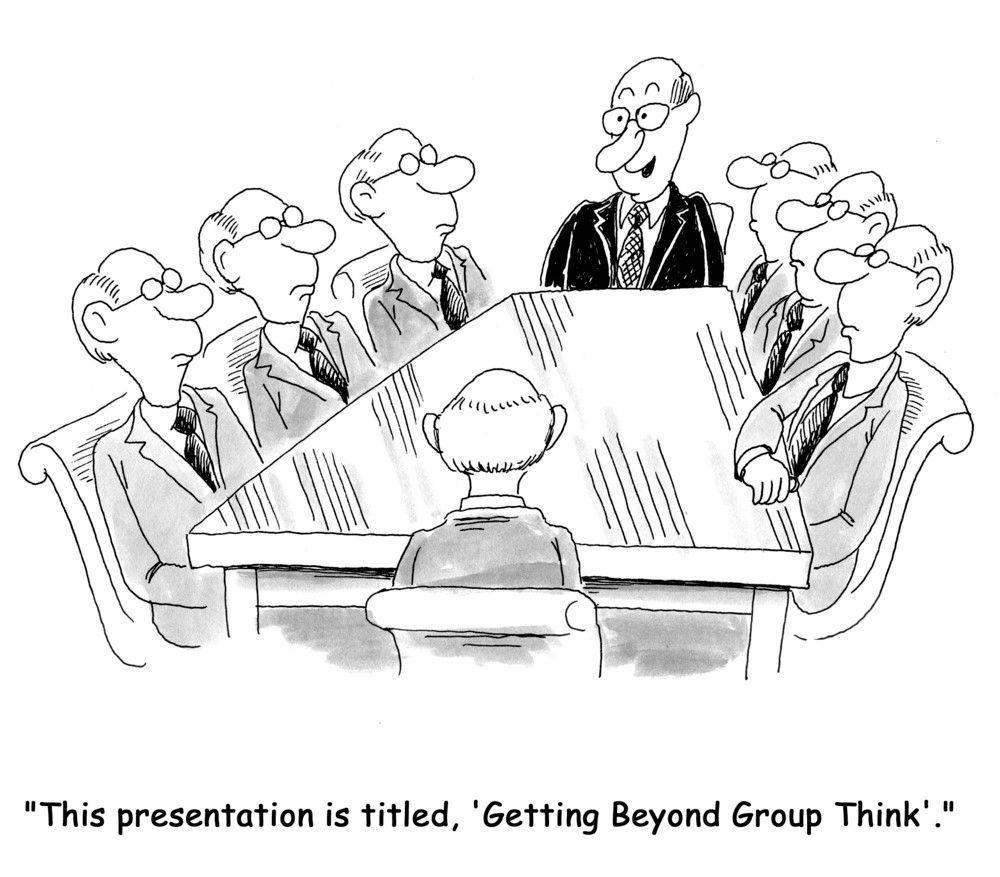
By Jordan Kelly
•
January 31, 2025
Adopting an "anti-template" policy is just as important in the development of bid strategy, as it is in the production of the end submission. Here are three primary reasons to avoid what I call “templated thinking” when formulating strategy: 1) Genericism vs Uniqueness: A Process that Doesn’t Match the Required Mindset Once the nature of a procurement or project is understood, a bid team should endeavour to identify and place focus on the characteristics of that procurement or project that are unique to that specific project. The use of pre-formulated, generic outlines is potentially counterproductive. 2) Strategy Development Should be Led By A Strategic Thinker Running a group through a pre-determined list of questions does not allow conversations to evolve naturally. Instead, thinking and discussion should be channelled along in a lateral – albeit controlled – fashion, developing all threads of input. This is something a template can’t achieve. 3) A Template-Directed Discussion Will Hit An Early Wall A template stops the discussion at a generically pre-determined point – possibly (well) short of the best possible strategic decision.

By Jordan Kelly
•
January 29, 2025
Every meeting opportunity you get in the lead-up to the release of the client’s formal Expression of Interest or Request for Proposal, is gold . Ensure you drill out the most valuable insights possible from each such opportunity, with some critical self-analysis of your preparatory thinking, including: To start with, are we meeting with the right people? Are these the real decision-makers, or as close as we can get to them? What will the customer / client organisation’s representatives expect that we know about their business and this project or procurement? In answering the above question as comprehensively as possible, have we broken down the project or the need into a strategically granular number of parts? Are we gathering as many insights into each of those parts as we possibly can? (Think both primary and secondary research.) In reviewing the above, is there any critical piece of information we’ve missed – either about our own product, service or company, or about theirs? What degree of competitive intelligence should we have done? What would a switched-on competitor have done? What might they know about us? Is this a procurement involving an incumbent? What do we know about the incumbent, the history of the account, and customer satisfaction levels with the status quo?

By Jordan Kelly
•
January 29, 2025
When you’re under the pump with a short submission timeframe, your best default strategy for getting a top-notch bid out the door in good time is to "go with the current" in terms of people’s natural talents. People can be coached in their areas of weakness to a reasonable degree but rarely will they be great in those particular aspects of bid production: people generally gravitate back to the aspects in which they naturally excel and endeavour to avoid those in which they don’t. The first step is to accurately identify the priority skills required for each part of the submission and the process, giving careful consideration to which individuals possess these. Really think about each person and who (rather than what ) they are; “day job” position titles can be misleading in the context of a bid. Often, the strengths and weaknesses you’d assume of an individual in a particular role just don’t import across into a bid team environment in the way you’d expect them to.

By Jordan Kelly
•
January 28, 2025
Your bid strategy is only ever going to be that trap, you stop yourself picking up all the cues being projected in the answering o good as the information you feed into your bid strategy formulation process. So it goes without saying that you want to make sure the information and insights gathered in by your Business Development operatives – as your frontline, primary research gatherers – are as accurate and as “real” as possible. On which note, in the same manner as clients will often be cagey or omit key information in tender debriefs, they’ll often be not quite as upfront in pre-probity meetings as you’d like to think or hope. So it’s incumbent upon your “BDs”, to make sure they make a savvy judgement about the accuracy of the inputs they’re getting from the prospect’s personnel. Here are some critical cues that your fellow meeting participant isn’t being completely on the level with you. Evasiveness (a la classic politician-type behaviour) Typical signs are long responses to a question, but no actual direct answer. For example, the procuring organisation might not be certain that they’re really going to actually award a contract at the end of the tender process. Maybe they haven’t got their funding secured yet – but don’t want to disclose that, because that would certainly discourage any bidders that don’t wish to waste time or budget bidding for a project or contract that might be an illusion. A prospect being questioned in this scenario might, for example, go into all manner of sideline issues. Exclusionary qualifiers For example, “fundamentally”, “not really”. These all amount to a desire to give an indirect answer or an indirect denial. They beg for a follow-up question. And you should ensure you ask one – gently, but savvily, nonetheless. You’re going to be investing major resources if you decide to go for this bid, and you want to be doing it on a foundation of true and accurate information. Dressing up the lie “To tell you the truth.” “Frankly.” “Honestly.” “To be honest with you.” You know them. By the way, sometimes these can be simply habitual for someone . . . maybe you do this yourself. Be careful with it. The question may well be asked, Aren’t you always telling the truth? Aren’t you always being honest? So why bother with making a special point of it with the particular statement you’re about to make this time? Offering too much information (especially if some of the information is irrelevant) in answer to a specific question This can (depending upon the context) be indicative of a desire to smoke over the facts. It can also be a ploy to manage your perception and convince you of a greater degree of honesty than is actually the case. This tactic is closely related to the evasiveness tactic. Attempting to be over-convincing This is the opposite of evasiveness. It’s basically an attempt to ensure believability. The skill with this tactic is to work out whether your prospect is over-compensating, or just passionate about the issue you’ve raised . . . which makes it particularly important to have your antenna up throughout the conversation leading up to that point. They’re ALL Diversionary In a sense, all of these are diversionary tactics . . . and any combination of them can be employed. A particularly key point of awareness for a BD in a situation in which they suspect their fellow meeting participants aren’t being straightforward, is to take the prospects’ language literally . For example, “wouldn’t” does NOT equate to “won’t” or “haven’t” or “didn’t”. What these are, are protesting statements without an actual denial. It’s easy to fall into the trap of listening through the filter of your own emotions or your own logic, or your own ethical standards, and to try to make sense of what you’re being told, from that perspective. And that’s a very easy way to allow yourself to be misled. Two Massive Red Flags Two massive red flags that you’re inadvertently threatening to uncover information the prospect doesn’t want uncovered, are: An aggressive or overly defensive response (i.e. attacking the questioner . . . not a good sign), and Turning the question back on the asker, in a particularly animated way. Of course, any of these could be habits in their own right. BUT . . . too many in quick succession, form what is known as a “cluster” . . . a combination of tell-tale signs that definitely spell cause for concern. Also in the outright dishonesty category is a verbal / non-verbal disconnect. A simplistic example: A prospect nods his head while giving a “No” answer verbally. That’s a cue that the brain is so confused with trying to disguise or protect their disingenuous position, that it can’t keep up. Closely related to that – in the arena of body language – is a new, sudden physical movement at the point where the body connects with the floor or the seat e.g. bouncing the foot or shifting in the chair. Investigators say this is a big one. Similarly, sudden grooming gestures, such as fixing a tie, or running the hand across the hair, glancing at a watch, moving the hands to the face. This is a typical, unconscious response when someone flicks into the “fight or flight” mode of the autonomic nervous system. The Eyes Are Indeed the Windows of the Soul Still on body language, remember the adage, “the eyes are the windows of the soul”. Looking up to the right, means they’re visually picturing or constructing something that’s never actually happened. Looking up to the left, means they’re remembering something. However, that applies only if they’re right-handed. In the case of a left-handed prospect, the opposite will apply . . . so be careful with that one, especially since you may have no idea whether your prospect is a right or a left-hander. And still on eyes, shifty eyes usually indicate dishonesty. Here’s the big clue with a shifty-eyed meeting participant: Does he or she look straight back at you after completing a statement? If so, he or she is typically trying to see whether you buy what’s just been said. Of course, on the phone, you lose the nonverbal cues. But you can, for example, still hear a chair moving or paper shuffling, or a keyboard being tapped, when a question leaves the other party feeling awkward and fiddling unconsciously while trying to think up (what is going to be) an unnatural answer. Aside from being aware of these cues per se , and the likelihood that they’re being employed more often than you’d like to think, your most critical communication strategy is not to allow your mind to fast-forward to your next intended question or statement. As soon as you fall into that trap, you stop yourself picking up all the cues being projected in the answering of your current question. A Word of Caution Mastering this is the field of the expert. It’s easy to learn these general principles and then make the mistake of applying them universally, in an overly simplistic manner. There’s a wad of variables to take into account: Is something entirely normal behaviour for the individual you’re conversing with (versus does their communication modus operandi suddenly change . . . especially in mid-conversation)? If you know someone and you’ve got a baseline understanding of them, you know how that individual typically communicates and conducts themselves . . . then any variance on this is a reasonably reliable flag. Is someone demonstrating “closed” body language (arms crossed, for example) purely because they’re cold? Make an indirect observation that helps you confirm or deny that. Is someone jiggling their foot simply because they actually are a jiggler? If it appears to be a response to a statement or a question that made them uncomfortable, move on to a more comfortable topic . . . and then move back towards the less comfortable one. Does the jiggling stop and then resume? When someone is stressed, the body emanates that stress . . . generally. Compulsive, pathological liars can, of course, be a totally different kettle of fish. They take a whole elevated level of smarts to deal with. Let’s hope we don’t encounter too many of those in the organisations of our prospective clients. But if you do ever encounter someone you suspect falls into that category, here are three key cues to look for: Indirect answers Yes, it’s a typical ploy that some people use to get out of a tight spot. But compulsive liars turn the indirect answer into an art form. Repeated vagueness in statements People who lie will typically avoid being detailed; they know there is too much to have to remember in a future conversation.
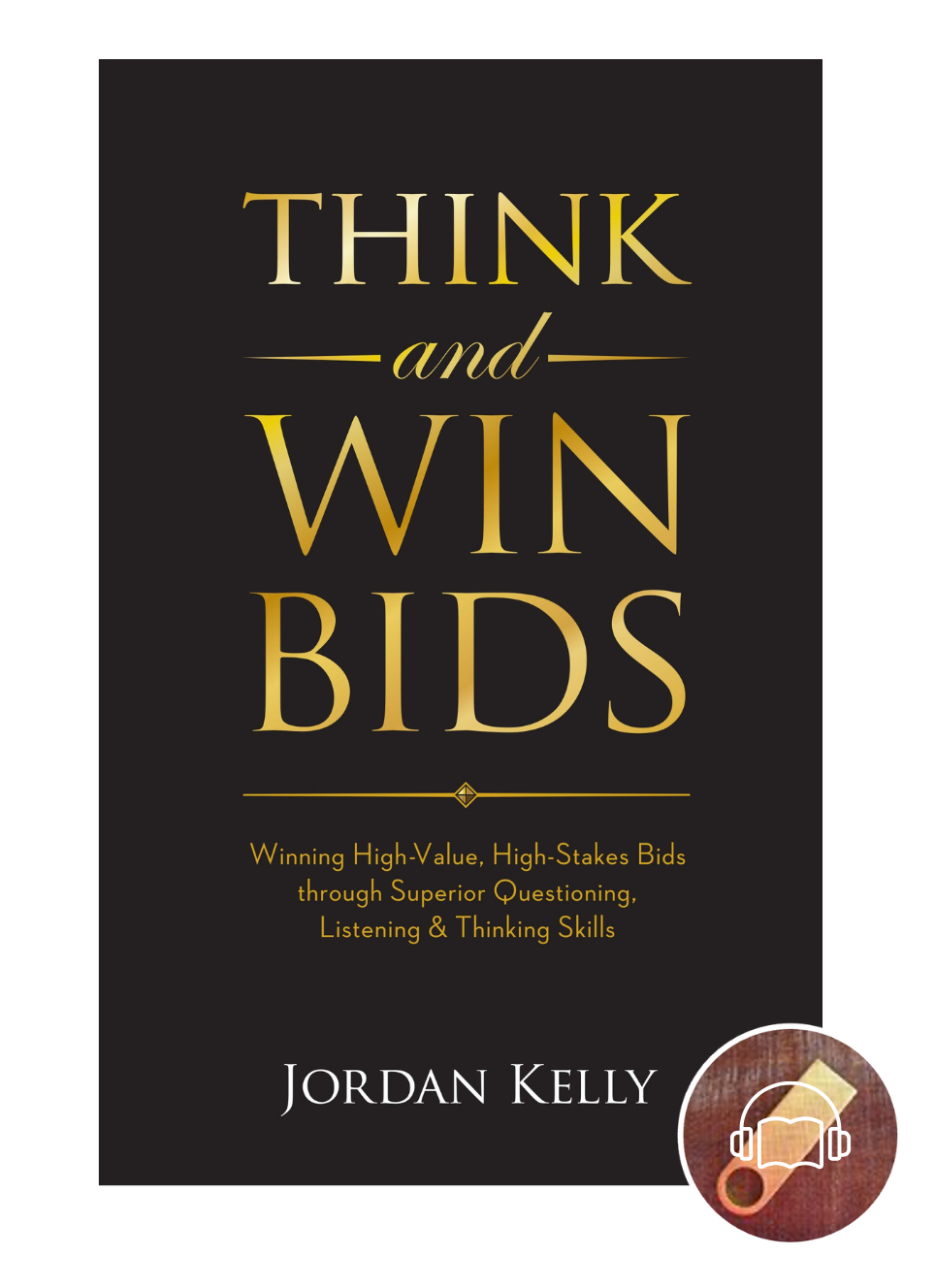
By Jordan Kelly
•
January 23, 2025
THINK AND WIN BIDS Winning High-Value, High-Stakes Bids through Superior Questioning, Listening & Thinking Skills The three fundamental skills of a successful bid strategist and bid leader are the ability to think , to listen and to ask quality questions . ' Think and Win Bids ' is more than a catchy title. This is a book with a strong message and a wealth of commanding insights into the fundamentals of winning bids . . . including the need to deeply understand a potential customer or client organisation, the world in which it operates, its intended procurement, and the all-important backdrop against which that procurement is being made. The capacity and willingness for a bid leader or business development professional to think deeply, logically, strategically and client-centrically is a key differentiator between those who can sustain a high win rate and provide much-needed leadership in new-business pursuits, and those who flounder in such a role. It’s a skill set that can be taught – so long as the necessary degree of humility and “coachability” exists. And that’s the reason this book was written. Its title is an unashamed play on that of the all-time business classic, Think & Grow Rich , penned in 1937 by leading business thinker of his time, Napoleon Hill. This highly readable, compact book will teach you: The importance of understanding your customer or client organisation and its procurement from a holistic (versus a narrow, service- or product-focused) perspective. How to gain a detailed and bid-winning appreciation of the procurement psyche of your prospective customer or client organisation. How to determine the most valuable information to acquire about a customer or client organisation’s intended procurement and the bigger picture directing or impacting it. How to plan for the acquisition of the above points of critical knowledge. The difference between high-value and low-value conversations and how to plan for the former. The specific differences between great listeners and average listeners. What highly effective business development operatives and bid professionals do that average ones don’t. The many types of information available to help inform your bid strategy, and how to source them. Little-known sources of competitor information. The criticality of channelling information back, in a valuable format, from the client or customer coalface to the bid team. What you need to know when your client organisation has its own (up-the-line) client. How to take advantage of arrogance on the part of the competition. The importance of avoiding arrogance in your own organisation. The value of “sleuthing” the customer’s documentation versus simply “reading” it. The critical distinction between “features” and “benefits” and how to capitalise on your ability to translate one into the other. What constitutes bid strategy . . . and what doesn’t. How to turn raw information into bid-winning intelligence. Working wide while drilling deep in the strategy formulation phase. How to develop a winning bid strategy. Why “thorough” is the best default position when it comes to strategy. Why talk of “silver bullets” is naive. How to avoid confusing tactics with strategy. Why templating is the opposite of thinking. The importance of documenting your bid blueprint in detail. How to position your organisation as a trusted advisor. How to get the most out of a de-brief. How to hire the most effective professional support.

By Jordan Kelly
•
January 22, 2025
Skimp on the detail in the first three stages of the bidding process and your chances of winning a mission-critical bid are severely compromised from the outset. On the flip side, do an outstanding job of laying these foundations, and you’ve given yourself a giant head start on any competitors that haven’t (and most don’t). 1. Conduct the most comprehensive, self-critical "bid or no bid" analysis possible. A competent and comprehensive “bid vs no bid analysis” gets you clear on every component of your motivation for bidding the project or contract in question. But that’s not all it achieves. It also lays the groundwork for the later formulation of your bid strategy, by identifying each individual point of alignment between the client’s objectives, challenges and concerns, and your enterprise’s capabilities. This gives you a head start on solidifying these and making them even more relevant to the client and its likely selection criteria. Equally, it helps you identify the points of misalignment; the areas in which a better-positioned competitor can undermine you . . . and gives you the earliest possible chance to address these. 2. Select your bid team members strategically. It’s a sad fact that, often – especially when a bidder has multiple Expression of Interest (EOI) and Request for Proposal (RFP) responses on the go – the bulk of the bid team is simply an assembly of the available, with a couple of relevant subject matter experts thrown in. There’s also scant attention paid to the probable dynamics within the team – and whether these are likely to result in a streamlined, highly productive process, or a frustrating, unhappy experience and a likely compromised output. The inputs and outputs of a bid team can only ever be as good as the research, care and strategy that went into the selection of the individuals it comprises. And, also of the way in which those individuals work together to enhance the performance of that collective. 3. Optimise every opportunity in the pre-probity phase. From the analysis of research requirements (both known and not yet known), to the identification both of primary and secondary sources, to the meticulous planning of the information collection activities, to the verification of resultant inputs, through to the conversion of raw information to high-value intelligence – and every minor stage in between – your bid strategy will fail or fly based on your diligence in this phase.

By Jordan Kelly
•
January 16, 2025
One of the most intelligent moves a bidding organisation can make in a high-value, intensely competitive bidding race (assuming the research and planning phase has started far enough in advance of the release of the client’s documentation to the market) is to select its client-facing “information gatherers” strategically. Many bidders give both inadequate and inactive thought to how important it is to exercise keen listening skills during any communication opportunity with a potential customer or client. However, a bidder can give itself a natural advantage in this regard by identifying and appointing people to the roles they most comfortably fit. For example, a highly social, talkative person (often the conventional choice for “business development” roles) is not necessarily always the best-suited operative to send into a meeting in which a depth of questioning and retention of substantial amounts or detail of information is required. An operative of a quieter, more deep-thinking and detail-observant disposition might be a more strategic appointee to the task.

By Jordan Kelly
•
January 15, 2025
One of the most intelligent moves a bidder can make in a critical, highly competitive bidding race is to be strategic in its selection of the specific individuals who will perform client-facing, information-gathering roles during the pre-contract phase. Many organisations automatically opt to put highly social, talkative personnel (often the conventional choice for “business development” positions) into such roles. However, this personality type is not always the best-suited operative to send into a meeting in which a depth of questioning (and a lot of listening and retaining of information) is required. I recommend appointing a more deep-thinking, detail-observant person to head this aspect of bidding activity – and then ensuring a process for the accurate and comprehensive conveying of their findings back to the broader bid team.

By Jordan Kelly
•
January 14, 2025
I’m always surprised at how many people think they’re great listeners . . . but aren’t . Mere surprise gives way to real concern, however, when it comes to poor listening skills on the part of customer-facing operatives (especially business development executives – “BDs”) in any of my client organisations. The discrepancy between the way poor listeners see themselves (i.e. the many who see themselves, ironically, as good listeners) and the reality of their communications performance, has its roots in a simple distinction: listening versus hearing. Listening and hearing aren’t always the same thing. Sometimes they are, but often they’re not. It depends on the orientation and attitude of the “listener”. A BD, for instance, can have many different ways of “listening”. Here are a few: • Cursory Listening This is “quick and dirty” listening, often the type of listening extended when the “listener” is “mentally multi-tasking”, or not deeply interested. • Shallow Listening Closely related to cursory listening, this is the type of listening that takes place when the BD or other customer-facing operative is of the belief that he or she already knows what the customer/client is about to say, already understands their problem/objective, and/or already knows the solution . . . or at least the solution it suits themselves to propose. Needless to say, this form of listening is often underpinned by arrogance – an attitude that has no place in the toolkit of a sharp BD. • Inquisitive Listening Moving into the more productive forms of listening, “inquisitive listening” is the first step towards real client-centricity, real problem-solving. Unlike the former brands of listening, it’s a mode in which the BD genuinely “hears” the client or customer. In this more (but not yet peak) strategic form of listening, the BD is able to gather and identify components of information that are critical to the formulation of a solution . That is, of course, if the BD is genuinely driven by the desire to act in the customer’s or client’s best interests, in terms of the solution to be arrived at. • Strategic Listening In this optimum form of listening, the business development operative hears the client at a very deep level. He picks up on his or her key motivating forces – the pain the organisation wants to avoid; the rewards sought both by the organisation, key stakeholders and personnel; the fears; the areas in which they seek clarity and direction over pre-existing confusion and indirection, and other intangibles. In this form of listening, the BD “listens between the lines” , empowering himself or herself with the ability to ask progressively more insightful questions. The BD that can perform at this level is also one who understands that information does not, in and of itself, constitute intelligence. He or she knows, however, that the answers to well-considered, quality questions loan themselves to conversion into valuable intelligence . The business development or other client-facing operative who has the smarts, the humility and the patience to listen at this level is a potential power tool to his or her organisation. I say “potential” because it’s the manner and comprehensiveness of the information that makes its way back through that operative and onwards to the bid team, that will dictate its next level of value. And it’s how that bid team then goes on to use it that will dictate its ultimate, bottom-line value.

By Jordan Kelly
•
January 14, 2025
It’s Hard to Win Over A Frustrated Client Raise your hand if you’ve ever been involved in a conversation in which your objective was to either identify a solution to a problem or obtain a recommendation for the best way to go about something. In this particular instance, you found the conversation frustrating, because your […]

By Jordan Kelly
•
January 13, 2025
Arrogance is undesirable. But when business development (BD), sales and bid team operatives blur the distinction between confidence and arrogance, the result can be commercially lethal. Here's the unspoken message an arrogant attitude on the part of a BD team or executive, a sales team or salesperson, or bid team members, projects to the prospect, client or customer: “We know what you want/need already. We have little need to spend a lot of time listening to you or drilling deeply into your problems or issues (and we possibly don’t know how to). We’ve dealt with lots of organisations just like yours. It goes without saying that our product/service is the superior option. I’ll certainly be happy to elaborate on all the reasons why – but really . . . you should already know! “And further, Mr/Ms Prospect/Client, it is unlikely we will ever have a conversation in which we are/I am willing to demonstrate sufficient humility to disclose the fact that there’s anything we/I don’t already know.” This is unfortunate - because BDs and other individuals in prospect/client interfacing roles should actually consider themselves, first and foremost, information-gatherers. Arrogance Kills Bidding Skills In short, arrogance kills listening skills. And where there is no listening , there is no learning . And where there is no learning, there is no means of determining the most meaningful way to differentiate your offering for the client or customer in question. Without meaningful differentiation, you are a commodity. When you are a commodity, you compete on little else but price. Displays of arrogance in the pre-sales/”discovery” stage are bad enough, but when they make their way into a Request for Proposal response, that bidder or bidding consortium has a real problem. And unfortunately, in a great many instances, they do make their way into the final bid. It works like this: Where an arrogant attitude has prevailed during the pre-sales process, very little “discovery” will have taken place, and so very little valuable information will have been gathered for use in the bid production process. So there’s a dearth of good customer or client-focused material to work with. It’s the reason so many bids are full of shallow, seller-centric, promotional fluff. It’s a vicious cycle. And the biggest problem of all is that those who most need to learn from a message like this, are the most likely to think it doesn’t apply to them. Do you recognise this problem – not in your own people, of course, but in other organisations . . . ?!

By Jordan Kelly
•
January 6, 2025
You’ve just lost a bid. It might be the ultimate "pain for gain" exercise, but now is the ideal time to lay the foundations for a stellar performance next time, by finding out what went wrong this time. In a highly competitive bidding arena, tomorrow’s success is often directly proportionate to how well you learn (or are prepared to learn) from today’s loss. To make the most of the valuable learning opportunity a loss represents, you need to ask the hard questions . . . of your own people, of the prospect, and of anyone else who will give you “no holds barred” feedback. It can be downright stomach-churning to request and receive the type of detailed “give it to us straight” information you need . . . but it can also be truly empowering. The deeper you drill down into the reasons you lost, the quicker you become adept at not making the same mistakes again (or at improving in the areas in which the competition did sufficiently better than you to take the prize).

By Jordan Kelly
•
December 19, 2024
As tenderers, we’re acutely aware of the first half of the evaluators’ role: to identify the best match for the target client’s needs (and to do so within reasonable budgetary parameters). However, because we’re so engrossed in producing a bid which will convince them that we are that “best match”, we often overlook the second half o f the eval uators’ job: to justify their selection. It’s actually two different processes . . . at the very least at the level of the subconscious. This is where the savvy bid team goes further than its competitors . . . by providing ready-made ammunition for the evaluators when they are asked to support their recommendations. Whether they are consultancies who must answer to their clients, or engineers and technicians who must answer to senior executives, or senior executives who must answer to their boards, or politicians who must answer to their constituencies, all selectors – at some point – will have to present a case for their decision. It behooves you and your bid to help them. The Principle in Action Let’s take the following as a quick case study: One of my clients – early in my specialisation in this field – embarked on a “must-win” bid for the telecommunications infrastructure subsidiary of one of Australasia’s major construction and engineering companies. Although part of a huge group, the subsidiary itself was a relatively small, stand-alone operation. Its competition (widely viewed as the front-runner for the project) was a publicly-owned telecommunications behemoth. My client won the contract – the largest win in the history of that small but highly progressive organisation. Now . . . here’s the fascinating part: The media release announcing the decision told us everything we needed to know about why we’d been selected . . . and largely in our own words! How had that happy result eventuated? It eventuated not only because of the extensive (secondary and primary) research we conducted into the target client’s environment and the compelling strategy we formulated . . . but also because the way we articulated that strategy had resulted in highly credible, authoritative content. This quality of content had instilled the selectors with the confidence not only to rely upon our information in making their decision, but also to communicate it onwards to their own key audiences. Six Key Component Processes Here we see the value of six prior processes, if conducted well: 1) Thorough and careful research at the secondary-source (i.e. indirect) level , in order to identify the big picture framework and parameters within which the procurement in question, sits. 2) Carefully planned and executed primary (i.e. client-facing) research , to identify the client’s greatest priorities, concerns and other “hot buttons” – both those openly voiced, and those held at a deeper, lesser articulated level. 3) Unadulterated pull-through and documentation of the findings of these research exercises and activities. 4) Formal documentation of the bid strategy – the bid’s “blueprint ”, if you will. (This is immeasurably superior to the standard practice of throwing up bullet points on flip sheets, papering the workshop room walls with these, and then trusting that the “strategy” will shake itself out of the resulting mosaic . . . and ultimately leaving it to the writing team to figure it all out.) 5) Production of a writer’s guide, or writers' guides for each Section/Schedule of the Response, to (a) ensure the next level of “pull-through” i.e. from the strategy to the submission document, (b) to guide the required answers to each of the client’s questions, and (c) to provide key phrases and concepts for appropriate and strategic appearance within the context of each answer/Schedule. 6) Editing, check-back and executive approval of each Schedule, at each level of editing/approval (including senior executive) with direct reference back to both the Strategy blueprint and the relevant writer’s guide. These six “macro-level” steps give you the very best chance of a client’s evaluation team reading your submission and feeling like they recognise themselves and their own inputs in your proposed offering or solution. It is the degree to which you achieve this, that is the degree to which you feed them the fodder they need to support their selection . . . of you .

By Jordan Kelly
•
December 18, 2024
‘Sir. I am a U.S. Marine. YOU are my mission.’ As a writer who also happens to be a movie buff, I’ve savoured thousands of good scenes and lines. But this one – from the award-winning ‘World Trade Center’ (released way back in 2006) – is one of the most powerful movie lines I’ve ever heard . . . at least, in the context of the scene during which it is delivered. A U.S. Marine, having volunteered for the harrowing task of searching for survivors in the rubble of Ground Zero, hears the desperate and muffled cries of two deeply buried New York City Port Authority policemen. He lacks the necessary equipment to move the rubble and communicates to the buried officers his intention to call for gear. One officer weakly calls back his concern that – given the dangers (i.e. to the Marine and his colleagues) associated with the rescue – he may be better advised to abort in favour of more achievable missions. That sparked the actor-Marine’s powerfully delivered and spine-tinglingly memorable line: “Sir. I am a U.S. Marine. I will not leave you. YOU are my mission.” What on Earth Does This Have to Do with Bids or Business Development? When that line was delivered, there was no doubt in the trapped officer’s mind that he was the concerted, dedicated focus of that Marine. The actor-officer’s confidence in the Marine was palpable, and his mental surrender to his situation – with the Marine in control – was total, without reserve. Oddly enough, there’s a distinct relevance to the discipline of business development and bidding. How would it be if you and your business development and bid teams could take a nervous, risk-averse client and give him or her that same feeling of justified surrender? The willingness to put his or her total trust and confidence in your knowledge, your dedication, your skills . . . and thus, your recommendations (read: your proposal)? Would that not be a powerful position to enjoy? Well . . . such a privileged position must be genuinely earned . And earning it requires exactly that – knowledge (i.e. deep, intelligent research), dedication (i.e. a selfless commitment to fully identify and then put the client’s needs first), and an appropriate and top-notch skill set (i.e. the ability to deliver the optimum product, service or solution to achieve the client’s objectives). Have You Made the Client Your Selfless & Unwavering ‘Mission’? Yet, how many business development operatives approach an opportunity or a client meeting with the mindset that they have much to “get across to” the client? And how many bids and proposals are written from exactly the same perspective? Of course, what they have to “get across to” the client, is a mountain of information about the supplier or service provider , and their wonderful product, service or solution. In other words, the focus is placed largely on the supplier and/or the service / product rather than where it should be placed i.e. on the client . (To hark back to the context of the Marine and his mission, this equates to said Marine – in the trapped officer’s moment of greatest vulnerability and dependence – breaking his intense concentration on that officer and bringing his fists up to pound his chest while expounding the virtues of his training and abilities.) Conversely, shifting the emphasis from the service provider and placing it on the client, requires a total surrender of self-interest and self-promotion (at least, initially), an open mind and a genuine hunger for knowledge about the client, all combined with a shared drive to see his or her organisation’s objective/s achieved. When your people genuinely – and I do mean genuinely – come from this place, your clients not only sense it; it screams at them (in the most comforting, confidence-engendering way). This is the very definition of “client-centricity” . . . and it speaks louder than any words or any marketing materials. Furthermore, it carries over into your bid documentation – provided that bid documentation has been directly informed and influenced by those who have sincerely made the client their “mission” .
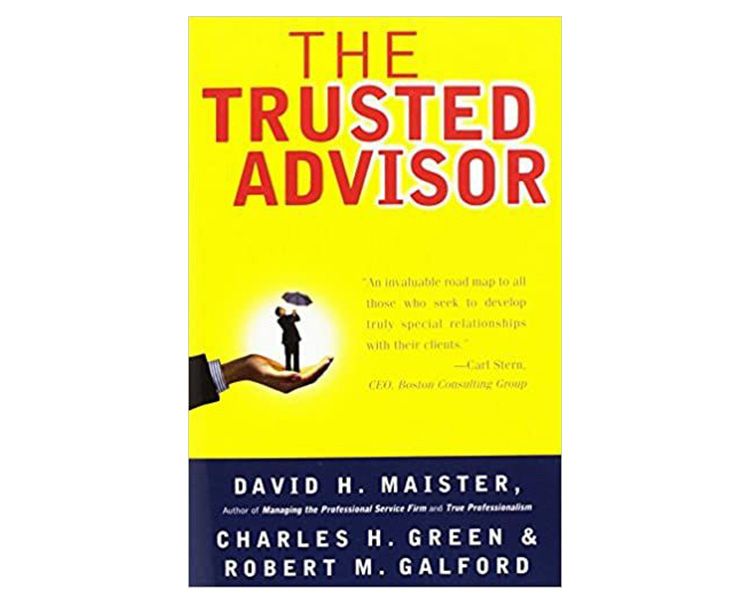
By Jordan Kelly
•
November 5, 2024
Over the past couple of decades, the term "trusted advisor" has gradually worked its way to buzz phrase status. Such lightweight bandying around is a great pity because, unlike other corporate mumph, "trusted advisor" is a genuinely meaningful concept. Here’s something I can literally guarantee (an undertaking never to be applied loosely): The company, sales team or executive treating the concept as a verb rather than some fashionable noun, will find that – over time – the practice pays significant dividends both when pursuing new business and when endeavouring to satisfy existing customers and clients. ‘The Consultant’s Consultant’ Did you know the origins of “trusted advisor”, and the tenets of the practice? The term was coined by former Harvard Business School professor, American writer and expert on business management practices, David Maister, in his (co-authored) runaway best-selling business book of the same name – published back in the year 2000. Before he retired, Maister was known as “the consultant’s consultant”. He commanded some of the highest fees paid to any business consultant anywhere, for his work with professional services firms. His advice holds so much relevance and potential power for bid teams, that I sought his written permission to excerpt and/or distil certain of his key points and include them in my book, ‘ Think and Win Bids: Winning High-Value, High-Stakes Bids through Superior Questioning, Listening & Thinking Skills‘ . Distilling his advice, in all its detail and richness, was a challenge. I read and re-read many times over, his words of wisdom, before I attempted the exercise. After all my deliberation, here are what I considered the six most important of the tenets comprising his “trusted advisor” philosophy – and how they underpin successful bidding practices: 1) Ask the client to talk about what’s behind the issue. Too many business development operatives think they understand the client deeply just because they’ve spoken about the central issue driving a procurement exercise. Rarely do they dig deeply enough . . . down, down, down into the political, historical and/or emotive picture beneath the surface of that issue. 2) Focus on defining the problem; not on guessing the solution. A logical follow-on to the above point, too many bidders are quick to rush in with their wonderful “ solutions “, without genuinely and deeply understanding the problem . 3) Let the client or customer fill in the empty spaces. “He who speaks least, listens loudest.” I’m pretty sure I just made that up (if not, it’s a quote that’s lodged in my head from some sage somewhere). 4) Use reflective listening to ensure you’ve heard and understood. No space for a lesson on this very valuable and very specific type of listening skill here, but if you have an interest in progressing your knowledge of it, it’s covered in an unglamorous (but top-notch, content-wise) textbook I wrote some years ago for the independent business college sector, ‘ How to Build Winning Customer & Client Relationships ‘ . If you want a copy, contact me. 5) Tell the client’s story before writing your own. This is in line with my frequent admonition that the only interest the client has in you , is what’s immediately relevant and of value to them and their need. Thus, everything you tell them about you , needs to be in the (prior-created) context of them . 6) Listen to EVERYTHING. And here I’ll quote the wise old saying: You’ve got two ears and one mouth. (Nature had her reasons. They were good ones.) The piece of the picture you missed because you were distracted, were planning your next statement, or were thinking about how your intended proposition can be made to fit their need, may well have been the most critical component of all in your much-needed understanding of their “big picture”. If nothing else, it will frustrate the client tremendously if they’ve taken the time to explain their issues to you and, in your bid documentation, you demonstrate gaps in your understanding – gaps that, in their mind, have no right to exist, given the time they spent with you.

By Jordan Kelly
•
October 16, 2024
With more and more non-price-based tender formats hitting the civil engineering marketplace (as when the Australian government sector’s Market-Led Proposals / "MLPs" format was released), the pressure is on to ensure delivery team members’ Curricula Vitae garner maximum points on the evaluators’ score sheet. So why are the vast majority of organisations insistent on placing such low priority on this critical bid-supporting mechanism? Why are they relying on woefully generic, multi-purposed CVs . . . when a superior performance in this central component of their submission stands to catapult them streets ahead of the competition? The Issues Let’s look at some of the problems and then some of the potential solutions, and let’s take – as a case study – one of the toughest industries in which to create differentiation between key personnel. In civil engineering’s major projects sector, players fish in the same (often international) pool of talent for their key personnel. They compete fiercely with each other for the “best” people for a project. Below are some of the problems that sector faces as they pertain to the production of bid-supporting Curricula Vitae. Being Forced to Hire Without Certainty In a high-profile Government-funded major infrastructure project that relies on the strategic selection and offering up of key personnel, industry players are forced to seek out expertise (both at the hands-on project management level and also at more the academic, oversight level) that relates as closely as possible to the key characteristics of the contract in question. That expertise doesn’t come cheap. And it certainly doesn’t come cheap when there’s a pre-bid bidding war for the same talent. If a company manages to secure the crème de la crème, specific talent they want to arm themselves with to bolster the smarts in their project delivery teams, they then have a real pressure to win the bid. No savvy construction or design company wants someone earning that sort of salary sitting around idle. (It’s also demoralising for the talent they hired in, who would have been looking forward to adding the prestige of that particular project to his or her personal CV.) It All Happens Too Late One of the issues closely related to this scenario is that, ironically, the competitive run on the targeted talent happens late in the bid process . . . meaning that CVs are often the last components off the submission production line. And we all know how much time is left for the last components off the submission production line. That’s one of the primary reasons the opportunity to highlight the intensely advantageous, highly relevant strengths of such key personnel is let go to waste. Here are some of the other reasons: Multi-Purposing of Curricula Vitae Creates Generic Blah The CV owners (i.e. the key personnel themselves) are asked to furnish their existing CVs, which will then be given a bit of an edit – or a “massage into shape” – by a generic “bid writer” or someone playing the role of editor. No-one actually interviews these key assets . . . or if they do, they don’t drill down deeply enough to flush out the most project-specific strengths of this particular asset, and why those strengths matter so much to the project’s success. Together with the above scenario, this is the No. 1 reason for the half-baked, non-compelling, unconvincing examples of thinly-veiled multi-purposed, generic boredom-in-print currently submitted in most organisations’ bid documentation. Every item below has its roots in the above. Poor Bid Strategy Processes Result in A Lack of Guidance The bid’s strategy development processes have either failed to fully identify, or capture and communicate, the client’s and the project’s most immediately pressing pain points, fears, desires, limitations, sensitivities and so on . . . such that the most relevant skills and strengths (other than simply the technical) of the CV owner can be compellingly presented. The Whole Has Not Been Presented As ‘Greater than the Sum of its Parts’ In yet a further wasted opportunity, the CVs of the individual personnel aren’t taken as a “whole”. Where personnel have been asked to largely author their own CVs, it goes without saying that these will have been produced in a vacuum. The “1 + 1 + 1 = 7” opportunity otherwise afforded by producing the CVs as a whole, and the team and its collective strengths and skills as a holistic solution, has been completely wasted. Lack of Interest by (Some, Not All) CV Owners (Sometimes being the case and sometimes not) CV owners are more focused on getting on with the project and doing what engineers and construction project managers do . . . which, by preference, would not include writing CVs and other bid-related activities. These are neither their strong suit nor their interest. Consequently, even when a professional writer is involved in the production of a CV, the time and focus that is nonetheless a required contribution to a successful output, is just not there on the part of the individual in question. (Again, please note that this final point doesn’t apply to all CV holders; only some. But when you’re relying on milking every last point out of the evaluation team for the collective of your CVs, one lukewarm CV is one too many.) If you want to make a quantum leap in the quality of this vital component of your submissions, avail your team of my course, ‘Operation CV: Formulating On-Target, Bid-Specific Curricula Vitae’ - coming soon. It’s for bid strategists, bid managers, bid writers and editors, and subject matter experts and other specialists within the delivery team . . . along with anyone else who wants to acquire mission-critical insights and skills like: How to identify the skills and strengths the prospective client organisation will value most highly. How to closely align the CV owner’s experience and strengths with the prospect organisation’s / procurement agency’s hot buttons. How to formulate CVs (both individually and as a consistently themed, content co-ordinated collective) to mitigate the client’s fears / perceived risks / concerns. What activities to conduct, in order to ensure the production of solid, detailed and purpose-specific CVs. How the bid manager can inspire the enthusiastic and diligent input of CV owners. How to demonstrate the logic behind each CV owner’s inclusion in the delivery team. How to edit to ensure strategic value and maximum point-scoring potential in the face of tight word count constraints. And a whole lot more.
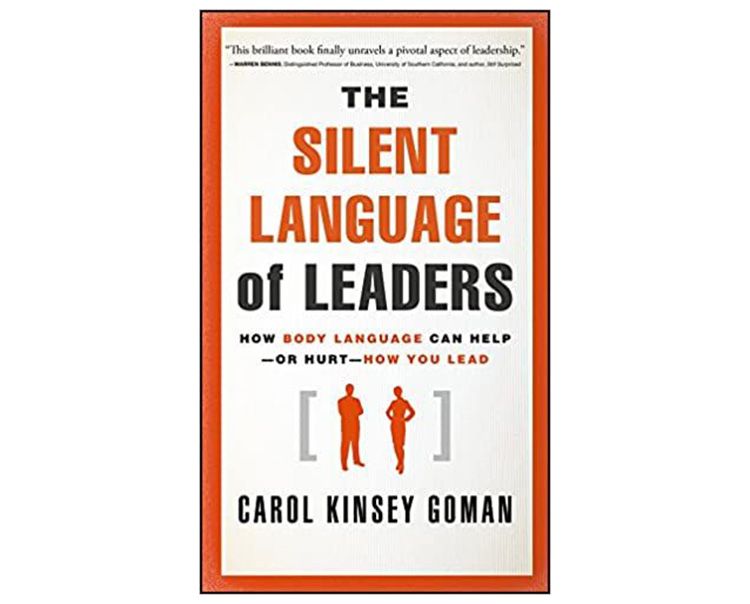
By Jordan Kelly
•
June 12, 2024
If you’re a female executive – and most especially if you participate in critical presentations and negotiations – you might want to think about the following male/female communication differences. In her book, ‘The Silent Language of Leaders’ , Carole Kinsey Goman lays out 13 distinctions between the way the two genders communicate nonverbally. These include: 1) Women prefer to stand face-on when communicating in person. Men, conversely, find this confrontational, preferring to stand at a more angular position to each other. 2) If a man is nodding, he agrees. When a woman nods, she may be agreeing, or she may be simply empathising and/or encouraging the speaker along. 3) For a woman, eye contact is a key element of effective listening. A man, however, can listen with considerably less eye contact or physical feedback. 4) Men not yet acquainted with each other keep a greater physical distance than do unacquainted female conversation partners. 5) Women use touch to indicate their agreement, empathy or general connection, while men use touch as a power gesture. 6) Men take up space. Women contract the amount of physical space they require. 7) Women use a greater variety of intonation in their speech, allowing their emotions readier vocal demonstration. Men’s speech has lesser tonal variety, its deeper quality sounding more controlled and confident. 8) Most men minimise facial expression. This makes a woman uneasy: she needs to “read” her conversation partner’s face. 9) Women smile more often than men . . . but it’s often used as a cover-up for nervousness, or to detract from something negative imparted in speech. 10) Men more naturally express anger nonverbally, through a quick release of energy like slapping a table. 11) Women cross their legs. Men adopt a quite opposite seating posture. 12) Men use body language to express their confidence. They also feel freer to send signals of indifference or disagreement. Women are quick to demonstrate enthusiasm, and display hurt more openly. 13) Women with tension or breathiness in their voices tend to be seen as less credible in the corporate setting. Men with a throaty tension to their voices enjoy enhanced credibility. While executives of both genders would do well to be mindful of these body language distinctions, the possession of these insights provides considerable advantage for females wanting to enjoy a level playing field – particularly in the context of an important pursuit.

By Jordan Kelly
•
October 19, 2021
Clearly, the rise of any CEO to the top of his or her organisation has required the application of a multi-factorial formula on his or her part. Over the years, however, I’ve made this constant observation: The majority of those who have worked their way to the helm of a major corporation or other substantial […]

By Jordan Kelly
•
October 19, 2021
Skimp on the detail in the first three stages of the bidding process and your chances of winning a mission-critical bid are severely compromised from the outset. On the flip side, do an outstanding job of laying these foundations, and you’ve given yourself a giant head start on any competitors that haven’t (and most don’t). […]
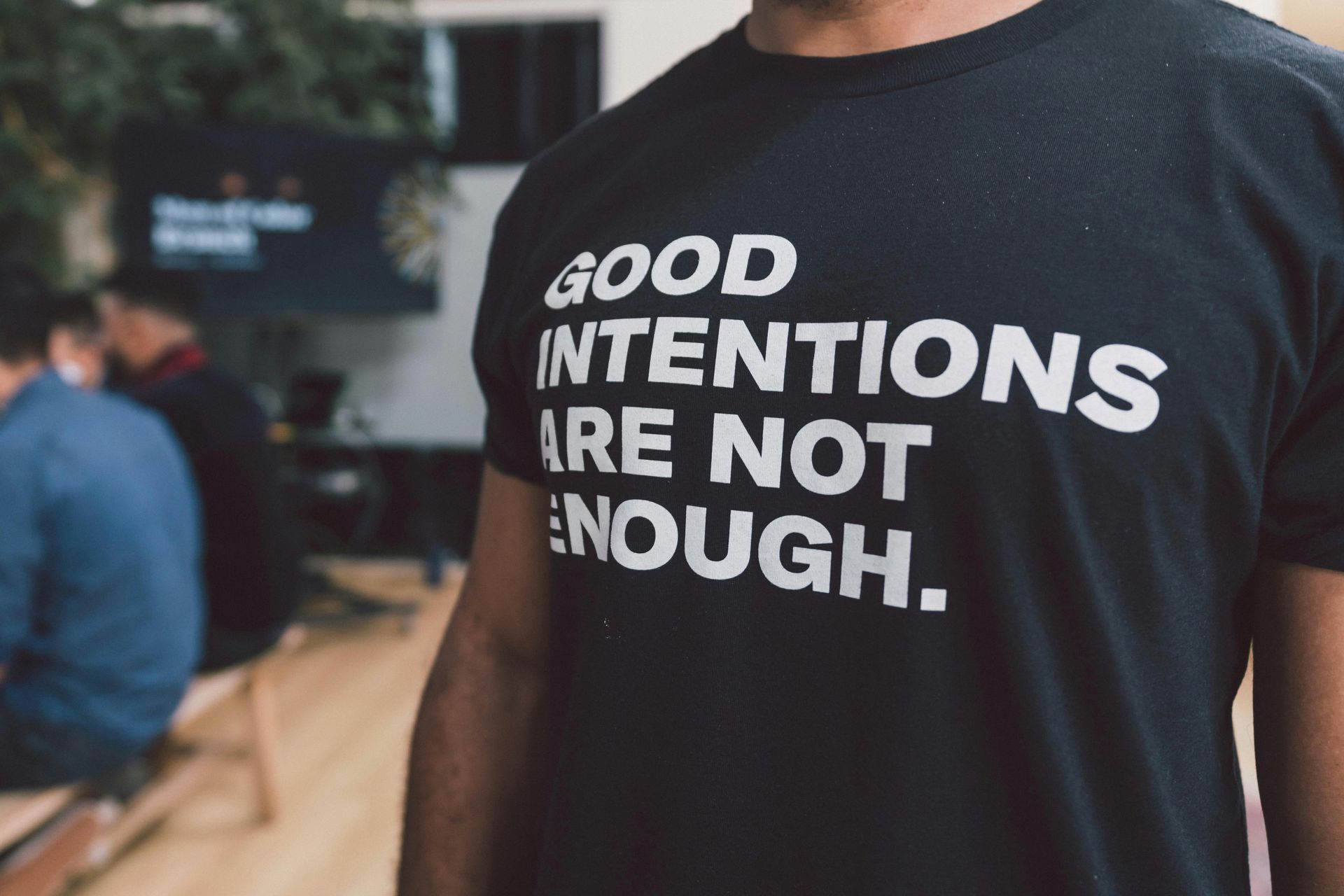
By Jordan Kelly
•
October 18, 2021
For any leader keen to sharpen up his or her organisation’s policies, practices and performance relating to its Code of Ethics, I can do no better than recount a discussion I had with the International Institute of Business Ethics’ UK-based Research Director, Simon Webley. To summarise Webley’s key recommendations on the topic: • Understand that every […]



